How It Works
- Tell us details of your holiday plan.
- After you submit the form, one of our travel experts will get back to you with customised holiday package based on your requirement, within 24 hours.
- Grab the deal and start packing your bags for an indelible holiday with Tour My India.
Call Us for details

+91-9212777225
Request a quote.
North India
- Himachal Pradesh
- Uttarakhand
- Uttarpradesh
South India
- Andhra Pradesh
- Maharashtra
Central India
- Madhya Pradesh
- Chhattisgarh
Union Territories
- Andaman and Nicobar Islands
- Jammu Kashmir
- Dadra and Nagar Haveli
- Daman and Diu
Popular India Tourism Destinations by Interest

- Hill Station
- Yoga and Ayurveda
Adventure Tourism
- Motor Biking
- Peak Climbing
- Mountain Biking
- River Rafting
- Horse Safari
- Camel Safari
- Jeep Safari
Pilgrimage Tourism
- Christianity
Packages by State
- Jammu & Kashmir
Holidays by Interest
- Heritage Tours
- Ayurveda Tours
- Special Interest
Popular Tour Packages
Golden triangle tour.
- Classical India Tour
- Golden Triangle with Tiger Tour
- Sikkim Darjeeling Tour
- Frozen River Trek
Luxury Train Tour
- Palace on Wheels
- Heritage on Wheels
- Maharaja Express
- Royal Rajasthan on Wheels
- Buddhist Circuit Train
Special Packages
- Indian Wildlife Tour
- Temple Trails Tour India
- Buddhist Circuit Tours
- Himalayan Wonder
Fixed Departure Tour
- Chadar Trek
- Chopta - Chandrashila Trek
- Snow Leopard
- Dzongri Goecha La Trek
- Agra Hotels
- Jaipur Hotels
- Udaipur Hotels
- Manali Hotels
- Ladakh Hotels
Wildlife Resorts
- Ranthambore National Park
- Bandhavgarh National Park
- Corbett National Park
- Kanha National Park
- Pench National Park
- Tadoba National Park
Beach Resorts
- The Park Calangute
- Neelam the Grand
- Hotel Calangute Towers
- Alor Holiday Resort
- Lazy Lagoon Sarovar Portico Suites
Luxury Hotels
- Aman-i-Khas, Ranthambore
- Hyatt, Bangalore
- Hyatt Regency, Delhi
- Leela Palace, Udaipur
- ITC Grand Chola, Chennai
Top Weekend Breaks & Short Getaways Near Your City
- Weekend Getaways Delhi
- Weekend Getaways Mumbai
- Weekend Getaways Chennai
- Weekend Getaways Bangalore
- Weekend Getaways Nagpur
- Weekend Getaways Hyderabad
- Weekend Getaways Cochin
- Weekend Getaways Chandigarh
- Weekend Getaways Ahmedabad
- Weekend Getaways Pune
- Weekend Getaways Jaipur
- Flight Booking
- International NEW
International

States › Uttar Pradesh › Agra › Top Tourist Attractions › Taj Mahal
Taj Mahal Uttar Pradesh
Taj Mahal is the epitome of grandeur and splendour, you cannot fathom the beauty of this white marbled monument unless you stand in front of it. As you approach Taj Mahal, it gradually becomes known to you that this is no ordinary monument, but a vision come to life! Moved by its beauty and the deep affection of Shah Jahan for Mumtaz, the Nobel Laureate Rabindranath Tagore called it "a teardrop on the face of eternity". A UNESCO World Heritage Site, it is located on the bank of the Yamuna River and is counted among the most popular heritage monuments in India.
Built between 1631 and 1648 AD, the Taj Mahal stands as the finest example of Indo-Islamic architecture, and is one of the seven wonders of the world. The timeless beauty of the Taj is a reflection of the profound pain and longing which Shah Jahan was overcome by after the death of Mumtaz Mahal. Today, visitors celebrate, reflect and admire the splendour of the Taj. Inside, both Shah Jahan and Mumtaz lie buried in their graves, divided in life, but united in death.
There is nothing ordinary about the Taj. From its minarets which are always bent curiously outwards to its inlay work, calligraphy, gateways, panels and arches, every nook and corner is a manifestation of divine grace that its builder seems to have been blessed with. Every intricate detail that catches your eye is worthy of being described in thousands way for its exquisite beauty. Unsurprisingly, Taj Mahal always occupies the first place in the heritage tourism attractions in Uttar Pradesh.
Architecture
The Taj Mahal is the finest example of Indo-Persian architecture. It incorporates Persian, Indian and Islamic architectural styles. The main gateway of the Taj Mahal, which is the most photographed section of the monument, consists of a door carved from solid silver. It is believed that this door was built to prevent the tomb which is located inside from being visible from anywhere. The tomb, therefore, is only visible when you have arrived at the gateway itself. Look up though and you will find the ceiling decorated with verses from the Holy Quran in wonderful calligraphy.
The tomb itself is built in a rectangular shape and lies at the northern end of the Taj Mahal. While the ceiling is decorated with floral patterns, the floors and other areas of the room are adorned with floral designs. Here, it is interesting to know that the tombs visible to the public and tourists are not the real tombs of Shah Jahan and Mumtaz. The real ones are protected in a crypt.
One feature of the Taj Mahal which makes its presence everywhere are the lily flowers. This suggests the love of the Mughals for gardens. Indeed, some of the best gardens in India were built by the Mughals. The central hall is surrounded by eight rooms which are connected by a common corridor.
No description of the architecture of the Taj Mahal is complete without mentioning its dome. It stands like a crown on a king and plays a big role in lending this monument a feeling of eternity. Bulbous shaped, the outer doom stands at a height of almost 44.4m, while the inner dome stands at a height of almost 24.3m. It is popularly believed that this dome was built by Ismail Afandi from Turkey, a renowned palace dome designer in Turkey. Here too, the combination of Hindu and Islamic styles of architectures is visible in the form of “chhatris” (an umbrella like structure), which is a feature mostly found in temples.
Interesting Facts about Taj Mahal
- The construction of the Taj Mahal took around 22,000 painters, stonecutters, embroidery artists and labourers.
- Around 1,000 elephants were used to transport the materials to the construction site.
- Shah Jahan wanted to build a black Taj Mahal which would stand across from the original one. However, before he could do so, he was deposed by his own son Aurangzeb.
- The minarets are leaning away from the monument in order to prevent any damage to it in the event of a collapse.
- It took 17 years to complete the building of the Taj Mahal.

- The Taj Mahal appears to change colors throughout the day. In the morning, it is milky white, in the afternoon, it looks like its tinged with crimson while at night, it sparkles under the moonlight.
- Although most of the Taj Mahal is ornately decorated, the only part which is not is the tomb.
- Henry Saint Clair Fredericks, an American Grammy Award Winning Blues musician, was so enamored of the Taj Mahal that he named himself after it.
- The Taj Mahal seems to get smaller as you move towards it, and larger as you move away from it.
- During times of war, the Taj Mahal is hidden with a scaffolding so as to prevent it from any attack. This was done during World War 2, the 1971 India-Pakistan War and in the 9/11 attack.
There are different entry fees for domestic and international tourists. Foreign tourists have to pay 1100 INR + 200 INR. There is an additional fee for visiting the mausoleum, which is optional. Citizens of SAARC and BIMSTEC countries have to pay 540 INR + 200 INR. There is a separate fee for those wanting to visit the memorial. Domestic tourists have to pay 50 INR + 200 INR (for those wanting to visit the mausoleum).
- Best Time to Visit
Taj Mahal, one of the top heritage attractions of India, can be visited throughout the year. During summer, it can get quite hot. If you are brave enough to face the heat, then you can visit it without any problem. However, the cool and pleasant weather during winters creates the perfect conditions for visiting it. Taj Mahal opens 30 minutes before sunrise and closes 30 minutes before sunset. It is closed for general viewing to all visitors on Fridays.
Nearby Tourist Attractions
There are several famous monuments located in close proximity to the Taj Mahal, one of the UNESCO Heritage Sites in India. Some of these are:
- Agra Fort (2.9 km): A UNESCO World Heritage Site, it evokes admiration from onlookers for its colossal size and magnificence.
- Fatehpur Sikri (41.4 km): Like the Taj Mahal and Agra Fort, Fatehpur Sikri is a UNESCO World Heritage Site.
- Itmad-ud-Daulah Tomb (6.7 km): It is the first tomb in India built out of pure white marble.
- Shri Mankameshwar Temple (4.2 km): Mankameshwar Temple one of the four ancient Shiva temples standing on each corner of the Agra city.
- Akbar's Tomb (14.8 km): Located in Sikandra, Akbar’s Tomb is also a very popular tourist attraction. As the name suggests, this is the final resting place of Akbar.
Popular Tourist Attractions in Agra
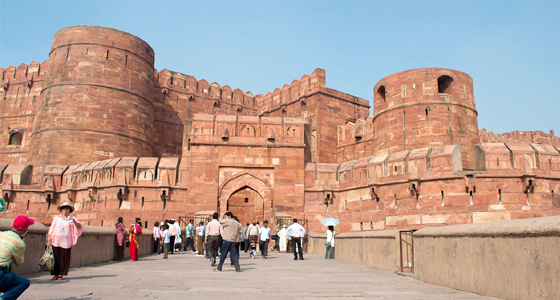
Sheesh Mahal

Tomb of Itimad-ud-Daulah

Diwan-i-Am Agra Fort

Jahangir Mahal

Jama Masjid

Anguri Bagh

Mehtab Bagh

Jawab Masjid

Tomb of Mariam Zamani

Diwan E Aam

Chini Ka Rauza Mausoleum

Tomb Of John Russell Colvin

Balkeshwar Mandir

Rawli Maharaj Temple

Rajeshwar Mandir

Shri Mankameshwar Mandir

Shahin Arts

Agra Art Gallery

Spiritual Museum

Wildlife SOS

Gurudwara Guru ka Tal

Kalakriti Cultural & Convention Center

St. George's Cathedral

Motilal Nehru Park

Korai Village Agra

Taj Gallery

New Nice Marble Art & Handicrafts
Popular tour packages for agra.

One Day Excursion to Agra from Delhi

2 Day Excursion to Agra from Delhi
1 NIGHTS/2 DAYS
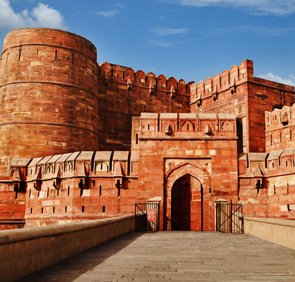
07 NIGHTS/08 DAYS

Best of Sikhism Tour
13 NIGHTS/14 DAYS
Top Things to Do & See on Your Trip to Uttar Pradesh
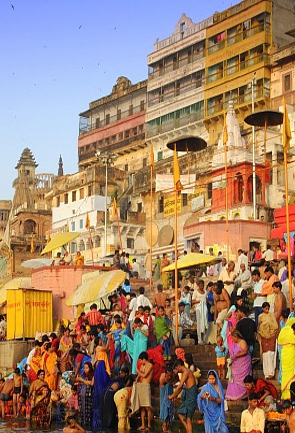
Pilgrimages

Arts & Crafts
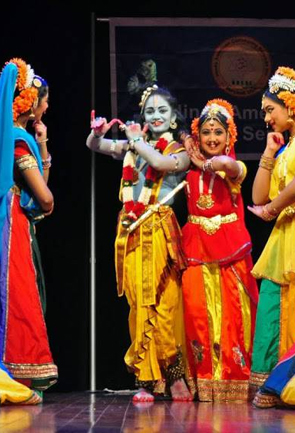
Folk Dance & Music
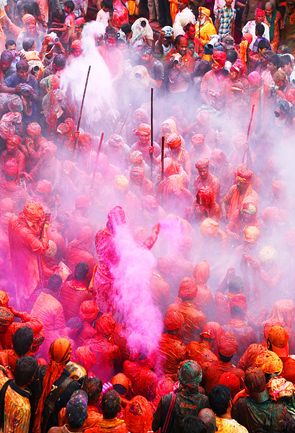
Fairs & Festivals

Gardens & Park
Uttar pradesh travel information.
Find the relevant information on how to plan hassle free trip to Uttar Pradesh. We have put together the best travel guide which include details on how to reach Uttar Pradesh by different means of transport along with authentic information on various trains, flights and buses. Find details on best time to visit Uttar Pradesh with average temperature in different seasons. Also explore the best places to visit for cultural tour, heritage attractions or sightseeing tour in the state with the help of the map made easy for you to navigate.
- About Uttar Pradesh
- Top Things to Do
- Top Tourist Places
- How to Reach Uttar Pradesh
- Summer Weather
- Monsoon Weather
- Winter Weather
- Uttar Pradesh Travel by Road
- Uttar Pradesh Travel by Train
- Uttar Pradesh Travel by Air
- Holiday Packages
- Culture & People
- Tourism Map
- Accommodation

Plan Your Trip
Request a FREE Quote

Visiting the Taj Mahal: plan the perfect trip to India's iconic monument

Mar 2, 2022 • 11 min read

From why it was built to where you can stay nearby, here's everything you need to know about visiting the Taj Mahal © SasinTipchai / Shutterstock
There are few sights in the world as iconic as the Taj Mahal . The grandeur of this magnificent monument is equaled only by the tragedy of its backstory – the tomb of a royal bride, created by a mourning emperor, who ended his days robbed of his empire, imprisoned in a gilded cell with a view of this beautiful, tragic mausoleum.
As the single most famous sight in the subcontinent, the Taj is a must-see on most India itineraries, particularly for travelers on the famous Golden Triangle circuit, linking Delhi , Agra , and Jaipur . However, the Taj is mobbed daily by sightseers from across India and around the world, so get used to the idea of sharing the experience.
Here is an introduction to the history and legends surrounding India’s most famous building, and tips for making the trip of a lifetime.
Where is the Taj Mahal?
The Taj Mahal stands in gorgeous Mughal gardens in the Taj Ganj district of Agra, a historic but noisy city of four million people on the hot, dusty plains of Uttar Pradesh in northern India .
Agra has a reputation as a hectic spot, but its historic wonders – not just the Taj, but nearby Agra Fort , and a string of other Mughal monuments – make it worth braving the touts, pollution, and persistent rickshaw drivers.
Agra is well connected by road, rail, and air. The easiest route from Delhi is the 6:55am 12280 Taj Express train, which reaches Agra in just three hours.
What is the Taj Mahal?
The Taj Mahal is often described as the greatest monument built for love, but the Taj Mahal is actually a memorial to tragedy. When Mumtaz Mahal, the chief consort of the Mughal emperor Shah Jahan, died in childbirth in 1631, the heartbroken emperor devoted years and a considerable fortune to constructing a tomb worthy of his great love.
The mausoleum was finally completed in 1648 after years of painstaking chiseling and carving by the most skilled craftspeople in the Mughal empire. The queen consort was interred inside in a private chamber at the heart of the monument and Shah Jahan was later buried alongside his wife when he died in 1666.
The Taj Mahal has many special features
The riverside location reveals a lot.
The Taj is tucked into a curve of the Yamuna River, a tributary of the sacred River Ganges, about 1.5km (1 mile) east of Agra Fort. The rediscovery of the "moonlight garden" – built across the river from the tomb but later buried by silt – hints at religious connotations to the Taj’s riverfront location, with the tomb’s eight rooms representing the hasht bihisht (eight paradises) and the Yamuna representing the rivers of milk and honey that wait for the virtuous in the afterlife.
The Taj is built with perfect symmetry
From its gleaming domes and filigree marble screens to its towering minarets, the Taj shows perfect bilateral symmetry along an axis running through the center of the main dome and the surrounding gardens. The only break in symmetry is found in the burial chamber, where the grave of Shah Jahan sits just to one side of the grave of Mumtaz Mahal set at the geometric center of the monument.
The dome is remarkable
The elegant onion-dome atop the Taj Mahal is a perfect illustration of the complex geometry used in Islamic architecture. The base of the dome – which is almost as tall as the building below, and flanked by four smaller domes – is supported by eight angled ogive arches, allowing the transition from a square plan to a circular structure.
The stonemasonry is a masterpiece
While it looks like it was carved from gleaming white marble, the Taj is a masterpiece of stone facing. Entombed behind intricately carved marble panels and perforated screens is a brick-and-lime mortar skeleton, but it cannot be glimpsed from any of the open areas of the monument. For insights into this style of Mughal architecture, check out Khan-i-Khanan’s Tomb in Delhi, which was stripped of its sandstone and marble veneer to build a tomb for a higher ranking Mughal dignitary.
The Taj is covered in magnificent ornamentation
The Taj isn’t the only Mughal monument to feature pietra dura – intricate inlay work, made from semi-precious stones – but it is unquestionably the finest. While it shines brilliant white from a distance, up close the Taj is adorned with an elegant tracery of filigree scrollwork, leaves, flowers and Islamic motifs, executed in marble, jasper, lapis lazuli, carnelian, malachite, and other colored stones.

Cultured calligraphy covers the four pishtaqs
The four pishtaqs (arched recesses) on the four sides of the Taj are framed by passages from the Quran in intricate calligraphy made from strips of jasper inlaid into marble panels. The script increases in size as it climbs the walls of the monument, but appears to be a uniform size when viewed from the ground – a testament to the complex architectural understanding of the craftspeople who built it.
The gardens are heavenly
Everyone has seen the photos of world leaders posed at the end of the ornamental ponds in front of the Taj. Both the main gardens inside the complex and the so-called moonlight garden on the north bank of the Yamuna River are built to mirror the charbagh , the four gardens of heaven. Note the influence of Islamic geometry – flowerbeds are shaped like the rub el hizb (Islamic star) and water features split each quarter of the gardens into four equal parts.
Shah Jahan and Mumtaz Mahal's graves are elsewhere
While the inlaid marble cenotaphs of the royal couple stand in an elegant space beneath the main dome, shielded by an octagonal perforated screen, these do not contain the bodies of Shah Jahan and Mumtaz. The actual graves of the emperor and his wife are hidden in an underground vault that has been closed to the public since the tomb was constructed.
The minarets are deliberately angled
Although they were never used for this purpose, the four towers marking the corners of the tomb were built as working minarets, with stairways and balconies allowing a muezzin to call the faithful to prayer. If you look closely, you’ll notice that the minarets are angled slightly outwards, allowing the towers to collapse away from the mausoleum in the event of an earthquake.
The Taj is flanked by a mosque and its mirror image
To the west of the main mausoleum is an elegant red sandstone mosque that is still in use today, with two low minarets that sit almost flush with its roofline, so as not to distract from the grandeur of the Taj. The identical building on the east side of the tomb was constructed purely for symmetry; it was not suitable for prayer as it faces away from Mecca.
The building's exterior is discolored due to pollution
The Taj still shimmers like it did in 1648, but up close, you may notice a yellow, green, and brown sheen, caused by toxic pollution from heavy industry and vehicle emissions in Agra. Despite government schemes to close factories and reduce traffic in the area around the Taj, and several attempts to clean the marble with "face packs" made from a fine clay that absorbs stains and other pollutants, the problem persists. In 2018, the Supreme Court issued an ultimatum to the Indian government to properly restore the Taj, or demolish it! In response, the Archaeological Survey of India announced a six-month program of mud-pack facials for the main dome in October 2021.
The Taj has often been copied, but never equalled
Copies of the Taj Mahal have been built around the world. Constructed by Aurangzeb’s son Azam Shah in 1679, the Bibi-qa-Maqbara in Aurangabad , is an obvious tribute to the Taj, though much less refined. There are also modern reproductions of the Taj Mahal in Bangladesh, China, Indonesia, Malaysia, the US, Brazil, Colombia, and several Gulf States.

The story of the Taj Mahal
The Taj didn’t spring into the world fully formed from the imaginations of its architects. Instead, it was the product of a generations-long process of architectural evolution, running throughout the Mughal period, with a string of earlier tombs marking the progress towards the Taj's funereal perfection.
Agra’s Itimad-ud-Daulah , built for Mumtaz Mahal’s grandfather in 1622, features many of the same design elements as the Taj Mahal, but lacks its finesse and perfect proportions. The nearby tomb of the emperor Akbar , built in 1605, was another imperfect Taj prototype, making similar use of ornamental minarets and white marble inlays. However, both monuments were merely refinements of architectural ideas first established by the tomb of Humayun , constructed in Delhi in 1569.
There are many legends of the Taj...
Many myths have grown up around the Taj. It’s claimed, for example, that the craftspeople who built it were mutilated so they could never build anything so beautiful again – though there’s no historical evidence for this. The same applies to the tale that Shah Jahan planned to build a mirror-image "Black Taj Mahal" on the opposite bank of the Yamuna River.
One story that is definitely true is that Shah Jahan was imprisoned in Agra Fort by his son, Aurangzeb, in a chamber with a view of the Taj Mahal– a torturous incarceration for the deposed emperor. It’s also true that the Taj is tilting ever so slightly, as the changing flow of the Yamuna River has dried the soil beneath its foundations. We’re some centuries away from a Leaning Taj of Agra, however!
...as well as some controversies
Some stories about the Taj are more controversial than others. Although no physical evidence has been discovered, some Hindu nationalists claim that the Taj was built over the desecrated ruins of a Hindu temple called Tejo Mahalya. There are even conspiracy theories about hidden doors protecting secret rooms full of looted Hindu treasures.
There is some historical precedent for Mughal monuments being built over temples – Delhi’s Qutab Minar complex was built using stones from 27 destroyed Hindu and Jain temples – but claims about the Taj were publicly debunked in court in 2017 by the Archaeological Survey of India .

Everything you need to know to plan your trip to the Taj Mahal
What is the best time to visit the taj.
It is possible to visit the Taj Mahal year-round, but it’s much more pleasant to explore the monument during the dry winter months, from October to March. From April to May, temperatures soar, and the skies open up for the monsoon from May to September.
How long do you need at the Taj?
Allow at least three hours to explore the mausoleum, gardens, and outlying buildings. Add in nearby Agra Fort and you’ll easily fill a day. Staying nearby in Taj Ganj will help you get to the gates ahead of the crowds.
What are the opening hours of the Taj?
The Taj is open from dawn to dusk, from Saturday to Thursday (the complex is reserved for worshippers on Fridays). Technically, the Taj opens 30 minutes before sunrise, so arrive before this time to be first through the doors. For the latest information on opening, visit the Taj’s official website .
When do night tours take place?
For five nights around the full moon the Taj is open between 8:30pm and 12:30am for special Night View tours. You only get to view the mausoleum from the edge of the compound, but it’s certainly a memorable way to see the Taj. Book tickets in advance through Agra’s Archaeological Survey of India office.

How much does it cost to visit the Taj?
International visitors pay Rs 1100 entry, while Indian visitors pay just Rs 50, and visitors from SAARC and BIMSTEC countries pay Rs 540. For all visitors, there’s an optional Rs 200 to enter the mausoleum. Tickets are available online via the Archaeological Survey of India payment portal . There’s no charge for using a still camera, but for video cameras, there’s a Rs 25 fee.
Where are the best places to stay nearby?
Accommodation close to the monument in the Taj Ganj district comes at a premium, but you might sneak a view of the Taj. At opposite ends of the price spectrum, the grand Oberoi Amarvilas and economical Saniya Palace Hotel both have stunning vistas of the mausoleum. However, you may have a cheaper and quieter stay if you pick a hotel near Sadar Bazaar or Fatehabad Road.
What's the best way to travel around in Agra?
Rickshaw, autorickshaw and taxi drivers in Agra are notorious for charging elevated rates; haggle firmly for a fair price before you set off. For a fair fixed fare, try booking a ride-share through the Ola app, or use the prepaid desks at Agra Cantonment Train Station.
What is the dress code and etiquette at the Taj Mahal?
The Taj Mahal is an active place of worship, so dress respectfully. Wear clothing that covers the upper arms and legs, and try not to be intrusive with your camera. Photos are prohibited inside the mausoleum, and tripods are banned completely. There are separate lines for men and women; food and tobacco are banned from the complex, and bags must be left in the free lockers at the west gate.
You might also like: When to go to India "I had to start a travel company to travel." How one agency is making tourism more inclusive and accessible Celebrating Diwali: India's festival of lights
This article was first published Jun 23, 2020 and updated Mar 2, 2022.
Explore related stories

Mar 11, 2020 • 6 min read
From Srinagar’s gardens to Agra’s mausoleums, Mughal architecture is distinctive and divine. Here's where to see it.

Nov 22, 2019 • 7 min read

Sep 19, 2019 • 6 min read

Aug 29, 2024 • 7 min read
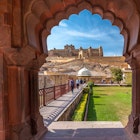
Aug 26, 2024 • 21 min read
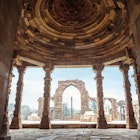
Jul 26, 2024 • 5 min read

Jul 25, 2024 • 8 min read

Jul 23, 2024 • 5 min read

Apr 18, 2024 • 6 min read

Mar 29, 2024 • 5 min read
Sorry, we couldn't find anything that matches your search.
Destination

Famous Places to Explore in Hyderabad
A vibrant city with the imposing...

Raipur Tourist Places | Best Place to Visit
The stronghold of several erstwhile...

Declared as India's first UNESCO World...

Ananthagiri
The verdant Ananthagiri Hills is...

Located on the banks of River Godavari,...

Situated around 40 km from Raipur,...

Boasting the famous Chand Baori...

Albert Hall Museum
A magnificent building built in...

2023. The year of India’s G20...
- Destinations
Mughal emperor Shah Jahan, the creator of the Taj Mahal, said that the beauty of the monument made “the sun and the moon shed tears from their eyes”. It has also been described as a “teardrop on the cheek of eternity” by Nobel laureate Rabindranath Tagore. Every year, thousands of tourists from around the world make a beeline for this breathtakingly ethereal marble monument, considerd by many as the most beautiful building constructed by man. The monument was built as a memorial by Mughal emperor Shah Jahan for his deceased wife, Mumtaz Mahal. It is one of the seven wonders of the world and is a monument of pride for not just Agra but also India.
A UNESCO World Heritage Site, it is featured in almost all literature about India and is one of the most enduring images of the country. Its name is believed to have been drawn from the Persian language: ‘taj’ means crown and ‘mahal’ means palace, thus making this the palace of the crown. Interestingly, the queen it was built in memory of, originally named Arjumand Begum, held the name Mumtaz Mahal, which meant the crown of the palace. Although it is best known as a symbol of love, a grieving emperor’s ode to his deceased queen, another legend sees the Taj Mahal as an embodiment of Shah Jahan’s vision of kingship. The story goes that he sought to build something akin to heaven on earth, a spectacular, unbelievably beautiful monument that reinforced the power as well as the perceived divinity of the monarch as next only to the Almighty.
It is also widely believed that emperor Shah Jahan invited artisans from Italy and Persia to work on this marble monument. It is said that Ustad Ahmad Lahori was the chief of the project while Ustad Isa Afandi made the site plan. The calligraphic work has been credited to Amanat Ali Khan Shirazi. A fascinating aspect of this structure is that it looks the same from all four sides, except the one that faces River Yamuna. This side is said to have been especially embellished to serve as the main entrance for the emperor. Shah Jahan would approach the Taj Mahal from the river, aboard a barge, while the entrance used by tourists today served, at the time, as an entryway for soldiers and common people. There are intricate inscriptions on all four entrances, while marble carvings and pietra dura mosaics adorn the walls. Lapis-lazuli, cornelian, mother of pearl, agate and emerald are some of the precious gems and stones that were once used in its design. It is said that work on its construction began in 1631. Legend has it that it took 20 years to complete this architectural marvel!
It is also riddled with optical illusions and masterful architectural safeguards. As one first beholds the monument from the main gate, for instance, the Taj Mahal looks large and imposing, but as you move closer, it appears to shrink in size. Also, the minarets surrounding the edifice, while perfectly upright to the naked eye, have actually been constructed to lean away from it so that, should a disaster like an earthquake come about, they would fall away from and not on the mausoleum.
Explore More

Taj Mahal-the symphony of love

Taj Mahal Walkthrough
Other attractions in agra.

Built by Mughal emperor Akbar in 1565 AD, Agra Fort is a majestic...

Itimad-ud-Daulah's tomb
This beautiful marble tomb is dedicated to Mirza Ghias Beg, the...
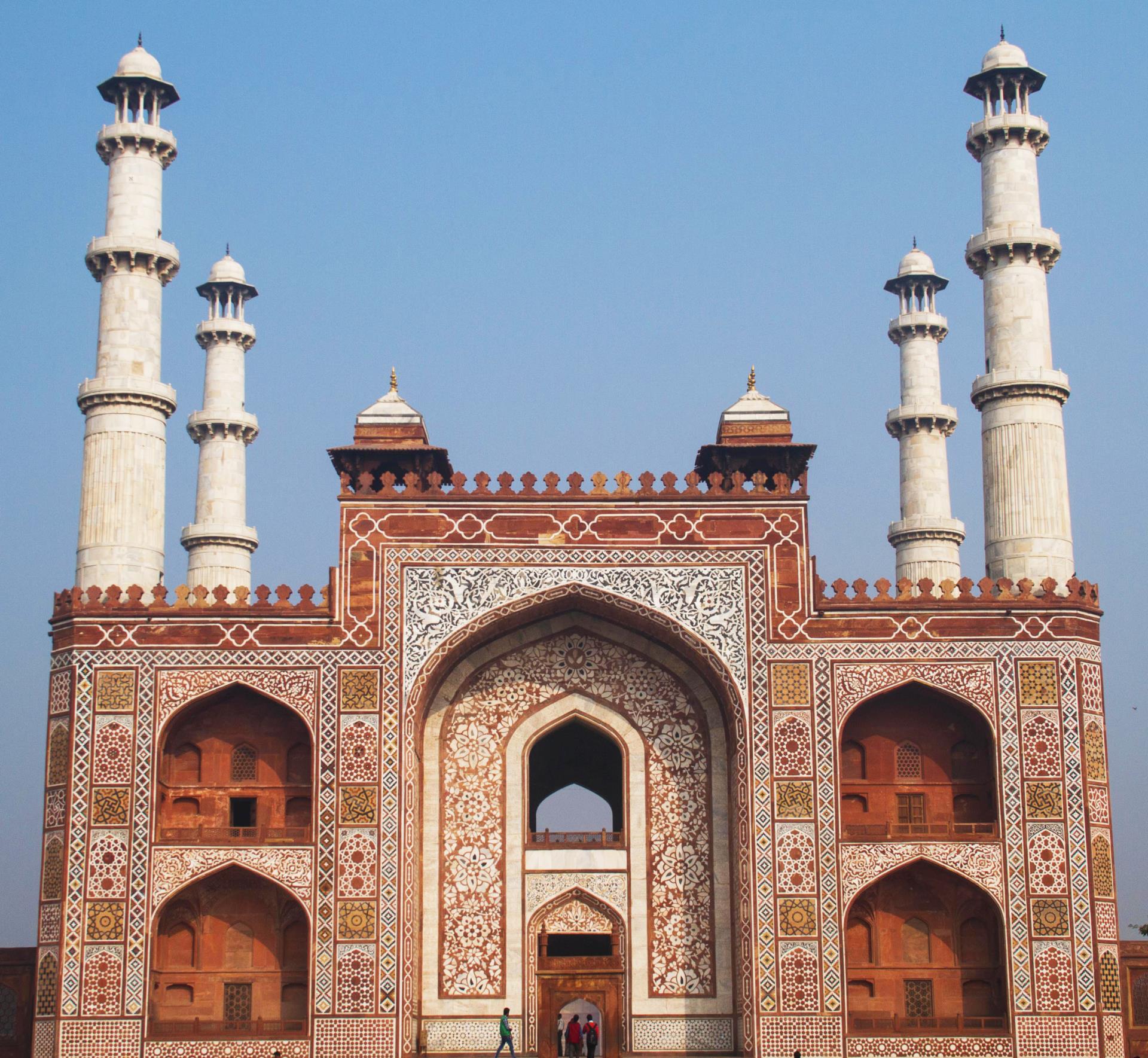
The mausoleum of Mughal emperor Akbar, Sikandra is a red sandstone...
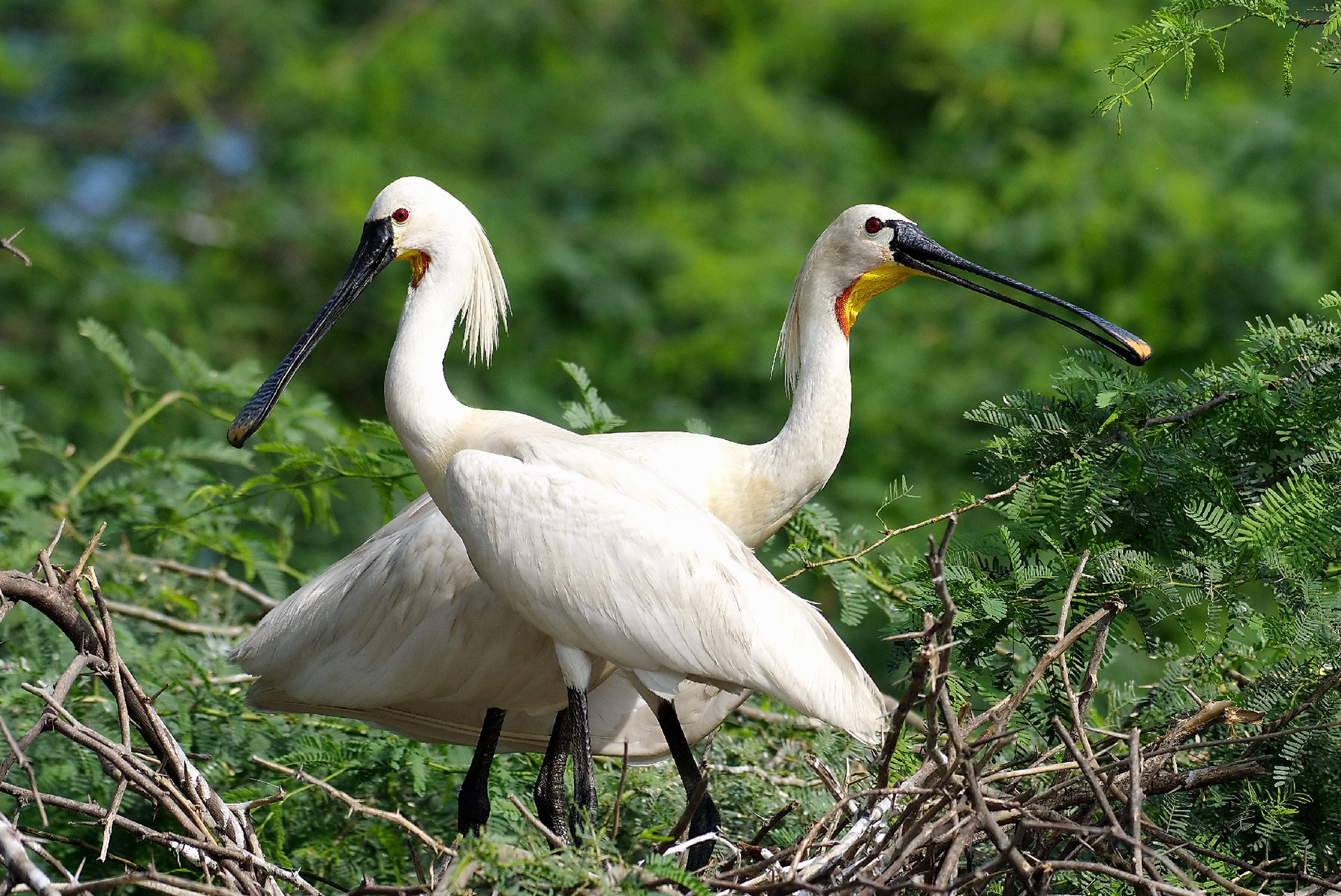
Soor Sarovar (Keetham Lake) Bird Sanctuary
Situated on the Delhi-Agra highway, Keetham Lake is about 20 km by...
We use cookies to ensure that you have the best experience on our website. Continued use of the website would be assumed to be an acceptance of these conditions.
Sign up to our newsletter to receive exciting content about the tourism destinations in India.
Thank you for subscribing! Explore India with us.
- Search Please fill out this field.
- Newsletters
- Destinations
- Uttar Pradesh
The Ultimate Guide to the Taj Mahal in India
:max_bytes(150000):strip_icc():format(webp)/10947453_10153084623948270_8191342691038933499_o-591d1e8d3df78cf5fa731909.jpg)
The Taj Mahal looms fairytale-like from the banks of the Yamuna River. It's India’s most recognized monument and is also one of the Seven Wonders of the World. The monument dates back to 1632 and is actually a tomb that contains the body of Mumtaz Mahal—the wife of Mughal emperor Shah Jahan. He had it built as an ode to his love for her. It's made out of marble and took 22 years and 20 000 workers to complete. Words cannot do the Taj Mahal justice, its incredible detail simply has to be seen to be appreciated.
Agra, in the state of Uttar Pradesh, approximately 200 kilometers (125 miles) from Delhi. It's part of India's popular Golden Triangle Tourist Circuit.
The best time is from November to February, otherwise it can be unbearably hot or rainy. You'll be able to get some excellent off-season discounts though.
The Taj Mahal appears to gradually alter its color in the changing light of the day. It’s well worth the effort to get up early and spend sunrise there, as it majestically reveals itself. Visiting around dawn will also enable you to beat the huge crowds that start arriving later in the morning.

Getting There
The Taj Mahal can be visited on a day trip from Delhi. Agra is well connected by rail. The main railway station is Agra Cantt. High speed Shatabdi Express services operate from Delhi, Varanasi, and cities in Rajasthan.
- Find out the best trains from Delhi to Agra .
The Yamuna Expressway opened in August 2012 and has reduced the travel time by road from Delhi to Agra to under three hours. It starts from Noida and a toll of 415 rupees per car for a one way trip (665 rupees round trip) is payable. Read more about hiring a car and driver.
The bus is a good option if getting a train isn't possible. Comfortable, air-conditioned Volvo buses depart from Anand Vihar terminal in New Delhi every hour during the day. The cost is about 700 rupees per person. The buses go via the Yamuna Expressway and stop at Vaango restaurant for a 30 minute snack and restroom break (the toilets are clean).
Alternatively you can fly from major Indian cities, or take a tour from Delhi.
Taj Mahal Tours
Viator (in conjunction with Tripadvisor) offers a popular and highly rated Private Day Tour to Agra and the Taj Mahal from Delhi, as well as a combined Day Tour to Agra and Fatehpur Sikri and Day Tour to Agra with Culture Walk. It's also possible to see the Taj Mahal at night during the full moon on this 2 Day Private Tour of Agra from Delhi.
Alternatively, see the Taj Mahal on one of these recommended Agra day tours: 11 Hour Agra Day Tour including Sunrise and Sunset at Taj Mahal , Private Taj Mahal and Agra Fort Tour including meal with a view and optional professional photographer, or Sunrise or Sunset View of Taj Mahal .
If you're looking for an inexpensive tour option, U.P. Tourism runs daily, full-day sightseeing bus tours (except on Fridays), to the Taj Mahal, Agra Fort and Fatehpur Sikri. The cost is 750 rupees for Indians and 3,600 rupees for foreigners. The price includes transport, monument entry tickets, and guide fees.
Opening Hours
The Taj Mahal opens 30 minutes before sunrise and closes 30 minutes before sunset, usually around 6 a.m. to 7 p.m. every day, except Friday (when it's closed for prayer). The Taj Mahal is also open for night viewing every full moon from 8.30 p.m. until 12.30 a.m., plus two days before and two days after the full moon (a total of five days). Night viewing is suspended during the holy month of Ramadan every year.
Entry Fees and Information
For foreigners, the ticket price is 1,100 rupees and for Indians, the price is 50 rupees. Children younger than 15 years can enter free. Tickets can be purchased at ticket offices near the entry gates or online at this website. (Do note, tickets for the Taj Mahal are no longer able to be purchased at Agra Fort or other monuments, and only offer a minimal discount if you wish to visit other monuments on the same day).
The foreigner's ticket includes shoe covers, bottle of water, tourist map of Agra, and bus or golf cart service to the entry gate. It also enables ticket holders to enter the Taj Mahal ahead of any Indian ticket holders already waiting in line.
Night Viewing tickets cost 750 rupees for foreigners and 510 rupees for Indians, for half an hour’s admittance. Children aged three to 15 years must pay 500 rupees. These tickets must be purchased between 10 a.m. and 6 p.m., one day in advance from the Archaeological Survey of India office on Mall Road. See more details here, including night viewing dates.
Vehicles aren't allowed within 500 meters of the Taj Mahal because of pollution. There are three entry gates—South, East, and West.
- The West gate is the main gate that the majority of local Indian visitors enter through, and it generally has the longest lines throughout the day. However, it's the preferred option at sunrise to avoid the crowds at the East gate.
- The East gate is popularly used by foreign tourists, as it's closest to a number of well-known hotels. It usually has shorter queues except for at sunrise, when large groups tend to arrive there. If you buy your ticket in advance the day before, it's still the best entry point. Do note that the ticket office (in Shilpgram) is inconveniently located about 10 minutes walk from the gate. Buses, golf carts and cycle rickshaws are available for those that can't, or don't want to, walk.
- The South gate is the least-used gate. It's close to a congested market area where many of the cheap hotels are situated, making it favored by budget and independent travelers. However, it doesn't open until 8 a.m. A huge sandstone gateway provides access to the inner compound there.
There are exclusive ticket counters for foreigners at both the East and West gates.
Security at the Taj Mahal
Strict security is in place at the Taj Mahal, and there are checkpoints at the entrances. Your bag will be scanned and searched. Large bags and day packs aren't allowed to be taken inside. Only small bags containing essential items are permitted. This includes one cell phone, a camera, and a water bottle per person. You can't bring edibles, tobacco products or lighters, electrical items (including phone chargers, headphones, iPads, torches), knives, or camera tripods inside. Cell phones are also banned during night viewing sessions, although cameras are still allowed. Luggage storage facilities are provided at the entry gates.
Guides and Audio Guides
If you want to marvel over the Taj Mahal without the distraction of having a tour guide with you, government-approved AudioCompass provides an inexpensive official Taj Mahal audio guide on its cell phone app. It's available in many foreign and Indian languages, including English, French, German, Italian, Spanish, and Japanese.
See the Taj Mahal Without Going Inside
If you don’t want to pay the costly admission fee or battle the crowds, you can get a great view of the Taj from across the river bank. This is ideal for sunset. One such place there is Mehtab Bagh—a 25 acre Mughal garden complex directly opposite the monument. The entry cost is 250 rupees for foreigners and 20 rupees for Indians, and it's open until sunset. Unfortunately, an unsightly barbed wire fence has been erected beside the river to stop tourists from wandering along it.
It's possible to take a row boat out on the river. Head down the path along the eastern wall of the Taj Mahal to the riverside temple, where you will find boatmen.
There's also a little-known abandoned watchtower across a sandy field on the eastern side of the Taj Mahal. It's an ideal place for a splendid sunset view of the monument. Reach it by heading east from the East Gate and taking a right at the fork in the road. Pay the official 50 rupees to enter.
Uttar Pradesh Tourism's Taj Khema hotel offers notable vistas of the Taj Mahal from its gardens too. A new marble bench was installed on a mound there in early 2015, especially for visitors. Sip tea and watch the sunset! The hotel is located about 200 meters from the monument, on the eastern side. It's a government-run establish, so don't expect great service though.
Another option is the rooftop of the Saniya Palace hotel, on the southern side of the Taj Mahal.
Cleaning of the Taj Mahal's Exterior
The first thorough cleaning of the Taj Mahal to remove the yellow discoloration from pollution and restore the marble to its original brilliant white color occurred in 2018. To achieve this, a natural clay paste was applied to the monument's exterior. The clay packing of the main dome remains and is planned to be undertaken in stages, starting from the front of the monument.
Taj Mahotsav takes place at Shilpgram in Agra, right near the Taj Mahal, from February 18-27 each year. The focus of this festival is on arts, crafts, Indian culture, and recreating the Mughal Era. It gets underway with a spectacular procession that includes elephants, camels, and drummers. Camel rides are on offer, and there are also games for the kids and a food festival. The venue has special significance, as it's apparently located on the site where the artisans who built the Taj Mahal once lived.
Where to Stay
Unfortunately, many of the hotels in Agra are as uninspiring as the city itself. However, these top Agra hotels should help make your stay a memorable one. There are accommodations to suit all budgets and many have Taj views.
Dangers and Annoyances
Visiting the Taj Mahal can be overwhelming for all the wrong reasons. Be prepared to encounter plenty of beggars and touts there. According to this news report , it has become an increasingly troublesome problem, and many visitors go back home feeling cheated, threatened and abused. Touts operate in sophisticated gangs that have counterparts in other cities who identify potential targets at railway stations. Once the tourists reach Agra, the touts start pestering them by claiming that they are guides or taxi drivers. They commonly use ploys such as free taxi rides or the promise of heavy discounts.
Note: There are 24 hour official prepaid auto rickshaw and taxi booths just outside Agra railway station. Use these to avoid the hassle, and if you book a tour there check the quality of your vehicle to make sure it's satisfactory.
Do be sure to tell auto rickshaw drivers which Taj Mahal entry gate you wish to be taken to, otherwise it's likely that you'll find yourself dropped off in the area where expensive horse and cart or camel rides wait to take tour groups to the west gate.
Apparently, there are only 50-60 approved guides at the Taj Mahal. However, more than 3,000 touts posing as photographers, guides or middleman, openly solicit customers at the monument's three gates (especially at the western gate, which receives around 60-70% of visitors). Hundreds of hawkers (who pay bribes to the police) are also a problem at the Taj Mahal, despite being officially banned.
In addition, foreigners, particularly women and parents with young children, are frequently asked to pose for photographs (or even being photographed without permission) by other people including groups of guys. This can be intrusive and uncomfortable. This news article warns about selfie seekers at the Taj Mahal.
Lastly, do be aware of the notorious gem scam , which is alarming prevalent in Agra.
Other Attractions Around Agra
Agra is a rather dirty and characterless city, so don’t spend too much time there. In case you're wondering what else to do in and around the city, take a look at these Top Places to Visit in Agra and Around.
Nature lovers will appreciate a trip to the Bharatpur Bird Sanctuary at Keoladeo Ghana National Park, 55 kilometers (34 miles) from Agra.
Related Articles
More related articles.

Essential Guide to Visiting the Taj Mahal
Taj mahal location, how to get to agra and the taj mahal.
- Best Time to Visit
- Entrance Cost and Rules
- What to Bring with You
- What to Wear at the Taj
- Why Book a Guided Tour
- How to See Without Going Inside
Where to Stay in Agra
What else is there to do in agra.
The Taj Mahal is one of the Seven Wonders of the World and on the top of everyone's list when visiting India. This incredible white marble structure is not only beautiful but is also a testament to the love that Mughal emperor Shah Jahan had for his wife Mumtaz Mahal.
Built in the mid-1600s over a period of 22 years using 20,000 workers, the Taj is truly a testament to otherworldly beauty and architecture.
On this page, you'll find everything you need to know when visiting the Taj Mahal including where it is, how to get there, what to wear, entrance fees, the best time to visit, and other things to do nearby.
The Taj Mahal is located in Agra, India. Agra is a small city in North India a few hours drive or 200 kilometers (125 miles) from the capital of New Delhi. Agra is often visited on the Golden Triangle travel route which includes the most popular stops in India: Delhi, Agra, and Jaipur.
Agra was a very important city during the Mughal rule of North India, but since then has a decrease in political importance and today only has 1.7 million people. The Taj Mahal is located to the east of the city near the banks of the holy Yamuna River.
Discover real reviews of Highlights Travel Family 's best-rated service across trusted platforms.
Agra is normally visited by travelers on the Golden Triangle circuit because it is around 200 kilometers from both Delhi and Jaipur. You can also make a day trip from Delhi to Agra to see the Taj Mahal and then return to Delhi. We recommend staying in Agra for 1 or 2 days to see some of the other World Heritage Sites there such as the Agra Fort and Baby Taj.
You can reach Agra from Delhi by train. The high-speed Shatabdi Express has trains that run between Agra, Delhi, and other cities in Rajasthan. A train from Delhi to Agra will likely take around 1 hour and 20 minutes.
You can also travel to Agra from Delhi by private car on the Yamuna Expressway. If you book a Golden Triangle tour, traveling between the three cities by private car will be included in the price. The car journey from Delhi to Agra takes around 3 hours and is often more comfortable and convenient than traveling by train.
Once you reach Agra, the Taj Mahal will be easy to reach from your hotel by either private car or rickshaw. We recommend taking a private car with a guide in order to avoid scams at the entrance.
Best Time to Visit the Taj Mahal
The Taj Mahal can be visited all year round, but the best time to visit is from November to February . This period is during the winter months in India when the weather is cool and dry and the skies are clear.
This time of year is the high season for visiting the Taj, so you can expect there to be larger crowds visiting this world wonder. During December and January, the Taj Mahal is often shrouded by fog in the morning so if you want the perfect sunrise shot, its best to go in November or February.
You can also visit the Taj Mahal from March to May and June to October. March, April, and May are the hot season in Agra with temperatures reaching up to 40°C (104°F). During the hot season, we recommend visiting in the early morning to catch the beautiful sunrise and avoid the heat.
March is the best hot season month to visit because the temperatures are still manageable and the crowds are much smaller.
June to October is the rainy season in Agra. This season is slightly cooler than the hot season but is still warm and humid. Agra doesn't get as much rain as other parts of India. The wettest month in Agra is August with an average of 272mm (10.7 inches) of rain.
You can still see the Taj during the rainy season, but you will need to spend a few more days in Agra to make sure that you have time to see everything and avoid the showers.
September is a good month to go for affordable hotel rates and travel. The last two weeks of September are often dry. October is the beginning of the high season and hotel prices normally rise on the 1st of the month.
Get more information on the best time to visit the Taj Mahal in a day.
Taj Mahal Entrance Cost and Rules
The Taj Mahal is open from 6 am to 7 pm every day except for Fridays when it is closed for prayer. The Taj also reopens every day from 8:30 pm to 12:30 am for 4 nights around the full moon.
The price of entrance tickets into the Taj is 1,100 rupees ($15) for non-Indians. You can get a 50 rupee discount if you pay with a card. Children younger than 15 can enter for free whether they are foreigners or Indians. Your ticket comes with a water bottle, shoe covers, and a map of Agra. Shoe covers must be worn inside the main building of the Taj Mahal.
The full moon night viewing tickets cost a little less than day tickets. For foreigners, night entrance is 750 rupees ($10) .
Taj Mahal tickets can be purchased at the entrance gates or online.
There are three entrance gates into the Taj Mahal complex: South, East, and West. The West Gate is the main date and normally has the longest lines throughout the day. The South Gate is the least used as it is in the heart of a congested market and a little difficult to access. The East Gate is most used by foreign visitors because it is close to many nice hotels and often has shorter lines.
The Taj Mahal is India's most important monument and has high levels of security at the entrance. When entering the Taj, your bags will be searched and no large bags are allowed inside.
Other items that are not allowed inside the Taj include food, cigarettes and lighters, tripods, and lighting equipment. Cameras are also not allowed inside the mausoleum as taking photos of the inside is prohibited.
If you bring a big bag or backpack, you may want to store it in a locker outside the monument so as to decrease your time at the security check.
What to Bring with You to the Taj
Because security is so high at the Taj Mahal and many things are not allowed, it's a good idea to only bring a small bag with a few belongings. Some items you may want to bring when visiting the Taj include:
- The Taj Mahal was constructed to be immensely beautiful. It is completely symmetrical and surrounded by gardens. The white walls of the Taj reflect the colors of the sky from orange in the early morning to dark blue at night.
- The Taj Mahal is a tomb containing the bodies of emperor Shah Jahan and his wife Mumtaz Mahal and is decorated to depict an image of heaven. The marble of the Taj is carved into beautiful floral designs and inlaid with semiprecious stones from Persia, Russia, Afghanistan, China, and the Indian Ocean.
- The story of its creator, Shah Jahan, is a sad one with his son betraying him after the death of Mumtaz Mahal and locking him away in the tower of the Agra Fort where he could still see the Taj from a distance.
Sunblock is especially important during the hot season, but you should consider wearing it no matter what time of year you visit the Taj. The sun reflects off of the white marble walls and garden pools causing your skin to be more exposed to the sun's rays than normal.
Bug spray is also important, especially during the rainy season, as the Taj is located next to the Yamuna River and sometimes has many mosquitos.
What to Wear to the Taj Mahal
There is no dress code for entering the Taj Mahal, but even so, it is important to be respectful of the local culture. It's a good idea to wear loose and long clothing. For women, a loose long-sleeved shirt and loose pants or a skirt are perfect. This way, you will be respectful and still stay cool in Agra's hot climate.
The general rule for how to dress appropriately in India is to cover everything above the knee and your shoulders.
To enter the mosque that is located on the grounds of the Taj Mahal, women will need to cover their heads, shoulders, and knees.
Why You Should Book A Guided Tour
Visiting the Taj on a guided tour is the best way to see this world wonder. Guides will take you to the Taj in a private car and help you get your tickets and through security. They will also show you around the Taj Mahal and give you all the information you could want to know.
Guides can also protect you from the many notorious scammers and hawkers who hang out near the Taj Mahal trying to catch unaware tourists.
If you visit the Taj with a guide, it is best to book through your hotel or through a tour company on a Golden Triangle tour. Outside the Taj, many people pose as guides who are not actually qualified to do so. To avoid this scam, make sure to book beforehand.
If you choose not to use a guide at the Taj, just make sure to keep your wits about you and turn down anyone who asks for photos or to be your guide. You can purchase an audio guide at the entrance of the Taj for around 105 rupees. Audio guides are available in many languages including English, German, Spanish, and French.
How to See the Taj Mahal Without Going Inside
Besides entering the official Taj Mahal grounds, there are a few other ways in Agra to see the Taj Mahal.
One of the most popular Taj viewing points is from Mehtab Bagh which is a large Mughal garden located just across the Yamuna river. Entrance to Mehtab Bagh costs around 300 rupees ($4) and the garden provides incredible views of the world wonder. This is an especially great place to view the Taj during sunrise.
You can also see the Taj Mahal from many hotel rooftop restaurants in Agra. You can see the beautiful mausoleum for free from the roof of the Taj Ganj hotel. You can also get great views of the Taj from the dining room of the Oberoi Amarvilas luxury hotel.
Lastly, you can see the Taj Mahal at a distance from the windows of the Agra Fort . The Agra Fort was also partially built by Emperor Shah Jahan and is the building where he was imprisoned by his son Aurangzeb.
Because Agra is such a large tourist area in India, the city is full of hotels for all budgets many of which are located near the Taj Mahal and offer rooftop views. Luxury hotels are particularly popular in the city and are great places for fine dining and spa experiences.
The Oberoi Amarvilas is the best hotel in Agra for luxury experiences. It is located around 600 meters from the Taj Mahal and its architecture was inspired by the monument. The hotel has fountains pavilions, gardens, and pools. It also has an incredible dining room where you can sip champagne while watching the sunset behind the Taj.
Another great luxury hotel in the city is Jaypee Palace. This hotel sits on 25 acres of and that is full of pools, gardens, and palm trees. Jaypee Palace is located in the center of Agra and close to all major attractions. They also have an outdoor dining location that features nightly performances.
If you are looking to stay in a resort, our favorites are the Trident and ITC Mughal. If you are looking for more affordable options then the DoubleTree by Hilton is a great one that also offers views of the Taj Mahal.
While the Taj Mahal is without a doubt the main attraction in Agra, there are plenty of other things to see in this ancient Mughal capital.
The Agra Fort is also a stunning location and is a UNESCO World Heritage Site that was built in the 16th-century. Inside the fort, you see a number of palaces that were built by different Mughal kings and also the place where Shah Jahan was imprisoned.
If you are interested in beautiful architecture, you can also go and see the tomb of Itimad-ud-Daulah . This tomb is only about a 25-minute drive from the Taj Mahal and is often called the "Baby Taj" because it was one of the architectural inspirations for the world wonder. This tomb contains the grandfather of Shah Jahan and was the first Mughal structure to be made of white marble.
Another UNESCO World Heritage site near Agra is Fatehpur Sikri which is the ruins of an ancient city that was originally built by the Mughal emperor Akbar as a place for his family to live. The city is made of red sandstone and contains the beautiful ruins of palaces, mosques, and homes.
If you are looking for some socially responsible activities, you can check out the Elephant Conservation Centre which is run by Wildlife SOS and works on the rehabilitation and care of rescue elephants. The city is also home to Sheroes Hangout which is a small cafe that is run by victims of acid attacks. Here you can grab a coffee and listen to the women's stories.
Some great restaurants in Agra include the fine dining Esphahan, the more relaxed Mama Chicken, and the delicious Pinch of Spice.
Visit India with Asia Highlights
Asia Highlights welcomes the chance to help you design your perfect trip to India. Check out the following links to learn more about our tours and get a head start on planning your hassle-free vacation today!
- 15-Day India and Sri Lanka Tour
- 12-Day India and Bhutan Tour
- 11-Day India and Nepal Tour
- 14-Day India, Nepal, and Bhutan Tour
Get Inspired with Some Popular Itineraries
At Asia Highlights, we create your kind of journey — your dates, your destinations, at your pace. You can have any trip tailor made for your travel.
More Travel Ideas and Inspiration
Sign up to our newsletter.
Be the first to receive exciting updates, exclusive promotions, and valuable travel tips from our team of experts.
Why Asia Highlights
Where can we take you today.
- Middle East
- African Safari
- Travel Agents
- Loyalty Program
- Privacy Policy
Address: Building 6, Chuangyi Business Park, 70 Qilidian Road, Guilin, Guangxi, 541004, China
National Geographic content straight to your inbox—sign up for our popular newsletters here

A girl gazes across the Lotus Pool toward the marble dome of the Taj Mahal.
India's Taj Mahal Is a Monument to Love
The famous tourist destination still has plenty to offer.
"The Taj Mahal shows three faces,” says Nicholas Wapshott, a British writer, journalist, and father. “In the early morning, it is floating in mist, as though sitting on clouds, like a heavenly place. In the middle of the day, the heat is searing, and it’s crowded. You see the Taj Mahal flat on. In the evening, or if you’re lucky enough to be there during a full moon, the white-marble building glistens and shimmers. Once children see the Taj Mahal, they will constantly look at the setting of any building relative to the time of day. It will change the way they see all other buildings from then on.”
A UNESCO World Heritage site and one of the new seven wonders of the world, the Taj is the icon of India . Even children cannot help but set their expectations high for a visit.
Wapshott’s son Oliver, 21, learned about the Taj as a young boy. When his mom, Louise Nicholson, author and lifelong India specialist, returned to London from trips to India, she shared photos and stories with him.
“From the time he could speak, he always called it the ‘Haj Matal’ and drew it at school when everyone else’s favorite building was Buckingham Palace or Big Ben,” his mother recalls.
Oliver’s dream of visiting the Taj Mahal was realized when he was seven, on a hot April day during a trip with his parents and brother.
“A lot of times, visiting these great monuments is anticlimatic, but the Taj Mahal lived up to, and even exceeded, my expectations,” Wapshott says. “There was a feeling that the spirit of the building was still alive, like the original intention of the building—as a symbol of love—was still there.”
The love story behind the Taj: In 1628, Shah Jahan became ruler of the Mughal Empire. His favorite wife, Mumtaz Mahal (which means “chosen one of the palace”), was his loyal travel companion. In 1631, while accompanying Shah Jahan on a military campaign to expand the empire into South India, she died in Burhanpur after giving birth to her 13th child.
Grief-stricken, the emperor went into mourning and threw himself into creating a monument to their love. In 1631, construction on the Taj Mahal began. Materials from various regions of India, Central Asia, and the Middle East were brought to Agra, and thousands of workers labored more than 20 years until the structure was completed.
“One of the most magical aspects of the Taj Mahal, and one few visitors take advantage of, is the view of it from across the river,” says Divay Gupta, director of programs for the Indian National Trust for Art and Cultural Heritage. At Agra Fort, for example, children will appreciate seeing the Taj from across the Yamuna River, just as Shah Jahan did during the last years of his life, after he was overthrown by his son and imprisoned there.
To enter the Taj Mahal complex, visitors must pass through security (do not take anything with you besides cash for tickets and a camera) and make their way to the entry gate, where they first glimpse the Taj Mahal. Wide paths lead to the raised platform in the middle of the garden, then to the mausoleum.
Gupta suggests taking a detour to show children the Taj from a different perspective. “Meander through the garden. It offers very interesting views of the Taj, perhaps what it looked like in the Mughal era. The present clear view and lawns were a British invention; it was otherwise in a thick, wooded area,” he says.
Rebecca Sullivan, an Australian who lived with her family in Mumbai from 2009 to 2011, says that her daughters enjoyed roaming the large grounds and suggests that kids take their own photos.
“The apparent obsession with symmetry in the Taj is easily captured and observed by kids if they have a digital camera. They also can capture the iconic image of the Taj reflected in the water of the pool,” she says. Rebecca’s daughters were impressed by the scale of the mausoleum and by touching the marble and inlaid stones. Eight-year-old Emma says she particularly remembers, “the special boxes where they were buried together forever.”
- Nat Geo Expeditions
In the completely symmetrical Taj Mahal complex, the tombs are the only nonsymmetrical components. Mumtaz Mahal’s resting place lies at the center of the mausoleum, and when Shah Jahan died in 1666, his tomb was placed to his wife’s right. “When we saw the tomb, everyone was silent,” Oliver recalls. “While it’s touristy, it felt very religious as well.”
Know Before You Go
Fast facts:.
- The acoustics inside the main dome, which soars to 240 feet, can cause the single note of a flute to echo five times.
- The meticulously engineered and decorated Taj Mahal required 22 years of labor by 20,000 workers. And more than 1,000 elephants were deployed to carry construction materials.
- In 1648, Shah Jahan moved the capital of the Mughal Empire to Delhi. Despite his devotion to Mumtaz Mahal, he likely did not visit the Taj Mahal again and only saw it from his prison at Agra Fort, after his son Aurangzeb usurped the throne.
Related Topics
- FAMILY TRAVEL
You May Also Like

The world’s largest flattop mountain is an adventurer’s paradise

6 canal-boating trips in the UK for families
Become a subscriber and support our award-winning editorial features, videos, photography, and more—for as little as $2/mo.

The mysterious origin of Stonehenge’s altar stone might have been solved

Discover Europe’s newest UNESCO World Heritage Sites

The real winter soldiers behind the U.S.’s newest national monument

To see the real Los Angeles, visit its historic movie theaters

Where to travel in May
- Environment
- Paid Content
History & Culture
- History & Culture
- Destination Guide
- Terms of Use
- Privacy Policy
- Your US State Privacy Rights
- Children's Online Privacy Policy
- Interest-Based Ads
- About Nielsen Measurement
- Do Not Sell or Share My Personal Information
- Nat Geo Home
- Attend a Live Event
- Book a Trip
- Inspire Your Kids
- Shop Nat Geo
- Visit the D.C. Museum
- Learn About Our Impact
- Support Our Mission
- Advertise With Us
- Customer Service
- Renew Subscription
- Manage Your Subscription
- Work at Nat Geo
- Sign Up for Our Newsletters
- Contribute to Protect the Planet
Copyright © 1996-2015 National Geographic Society Copyright © 2015-2024 National Geographic Partners, LLC. All rights reserved

Adventure Tours
Cultural tours.
- Golden Triangle
Historical Tours
Honey moon tour, our destinations.

Uttar Pradesh
+91-989 706 4802, [email protected].

- Destination
How to Visit the Taj Mahal: A Comprehensive Guide
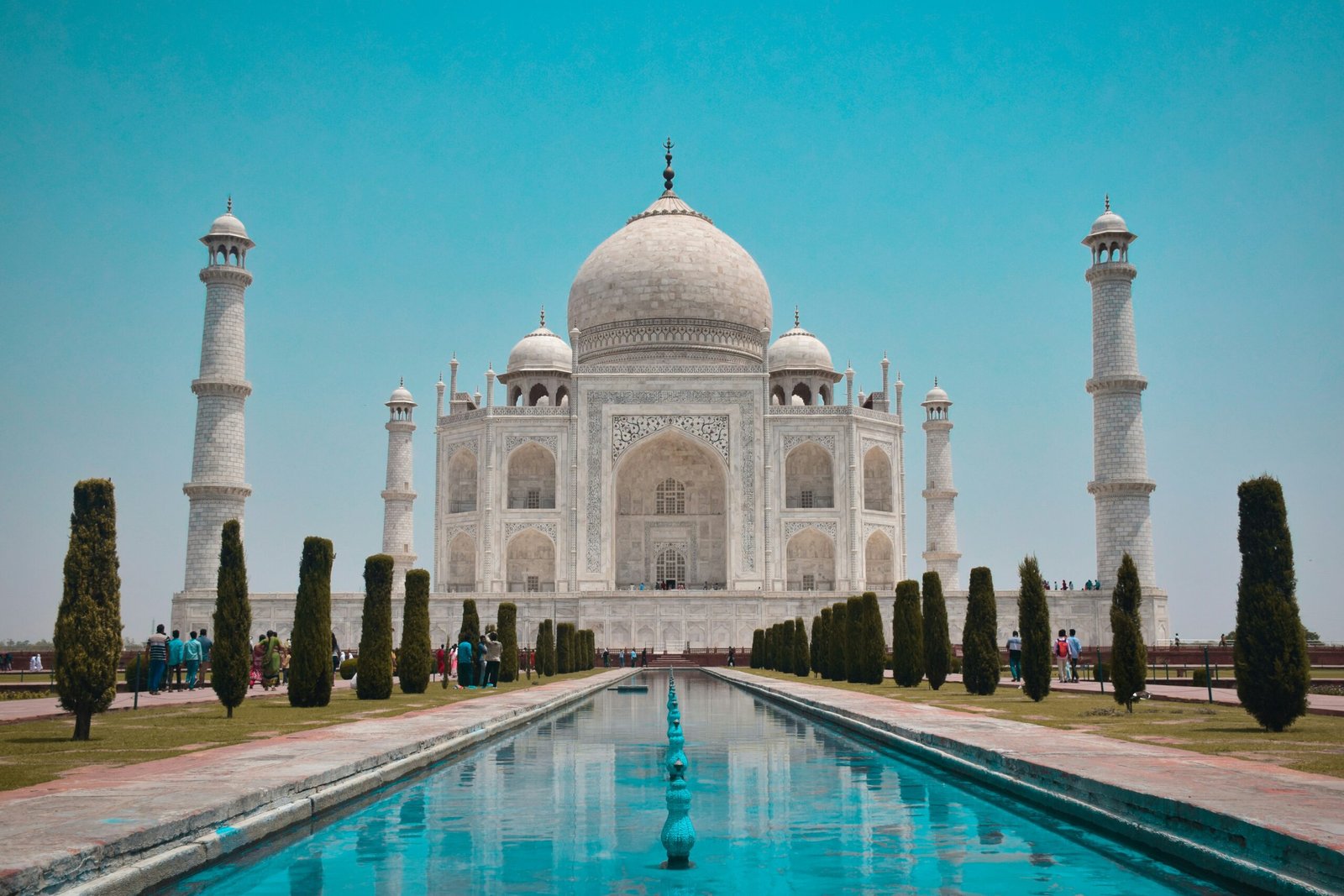
By, akashsinha41
- 13 Min Read
- (0) Comment
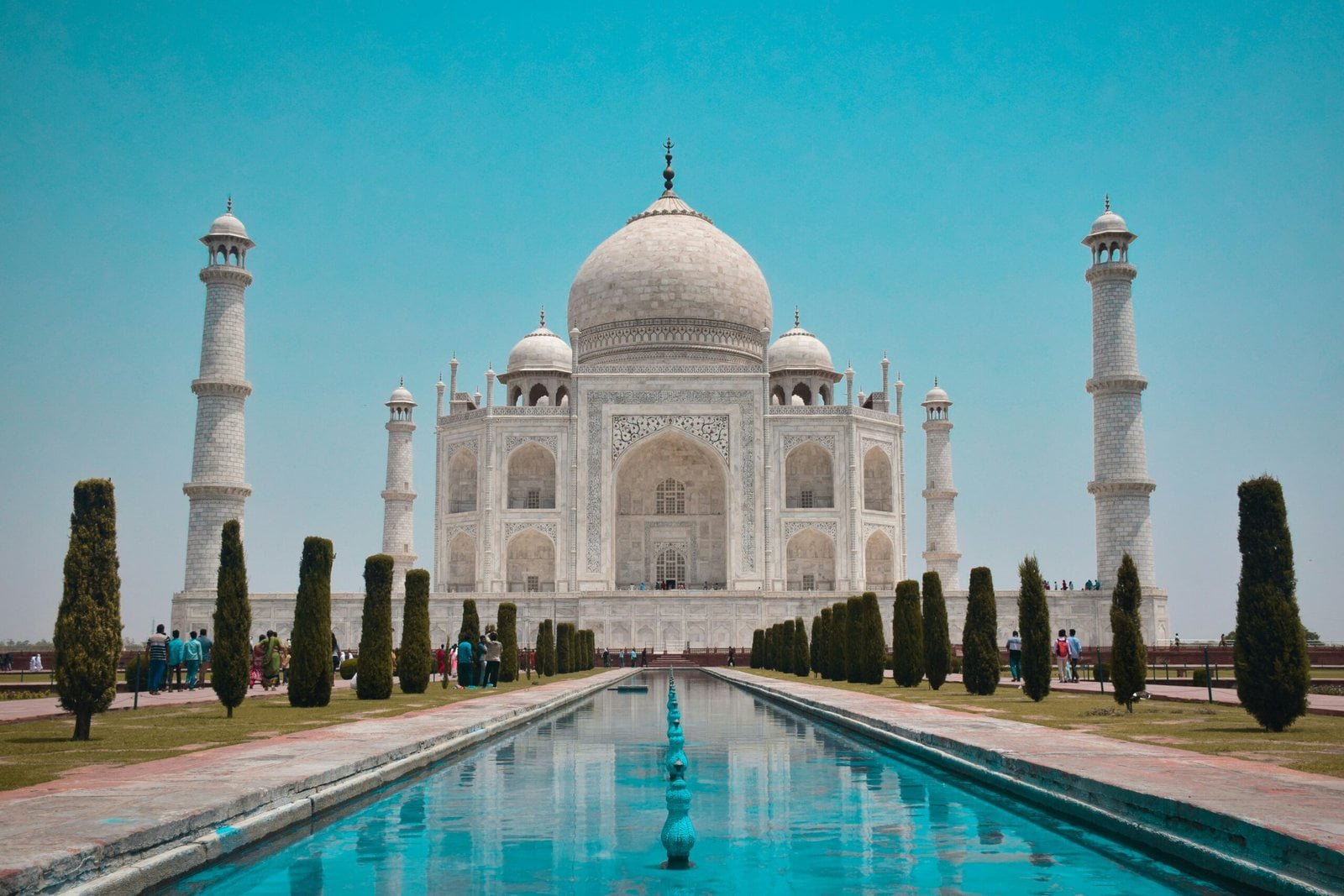
Introduction to the Taj Mahal
Nestled on the southern bank of the Yamuna River in Agra, India, the Taj Mahal stands as a timeless monument of love and architectural grandeur. Commissioned in 1632 by Emperor Shah Jahan, this iconic mausoleum was constructed in memory of his beloved wife, Mumtaz Mahal. The Taj Mahal’s intricate beauty and historical significance have earned it a place among the Seven Wonders of the World, drawing millions of visitors annually from across the globe.
The construction of the Taj Mahal is a tale of both devotion and artistry. Shah Jahan’s immense grief over the death of Mumtaz Mahal during childbirth inspired him to build this magnificent structure as an everlasting tribute to her. The mausoleum, completed in 1648, is an exquisite blend of Persian, Islamic, and Indian architectural styles, symbolizing the emperor’s deep affection and the era’s architectural prowess. The central dome, flanked by four minarets, is adorned with intricate inlay work and calligraphy, showcasing the craftsmanship of the artisans and laborers who toiled for years to bring the emperor’s vision to life.
Designated as a UNESCO World Heritage Site in 1983, the Taj Mahal is revered not only for its stunning aesthetics but also for its cultural and historical significance. The site spans approximately 42 acres and includes lush gardens, reflecting pools, and ancillary buildings that enhance the overall splendor of the main mausoleum. The Taj Mahal’s status as a heritage site underscores its importance as a symbol of India’s rich history and enduring legacy.
Visiting the Taj Mahal offers a profound glimpse into the past, where art and emotion converge to create one of the world’s most celebrated landmarks. Whether you are drawn by its historical narrative or its architectural brilliance, the Taj Mahal promises an experience that resonates with the timeless essence of love and beauty.
Best Time to Visit
When planning a visit to the Taj Mahal, timing is crucial to ensure a pleasant experience. The best time to visit the Taj Mahal is during the cooler months from October to March. During this period, the weather is more comfortable, with daytime temperatures ranging from 15°C to 25°C (59°F to 77°F), making it ideal for exploring the monument and its surrounding gardens without the discomfort of extreme heat.
Visiting during these months also allows you to avoid the monsoon season, which spans from June to September. The monsoon can bring heavy rainfall, leading to muddy pathways and reduced visibility, which can detract from the overall experience. Additionally, the crowds tend to be smaller outside of peak tourist season, which generally falls between December and January, allowing for a more intimate experience with fewer distractions.
For those looking to capture the best photographs of the Taj Mahal, consider visiting during the early morning hours, just after sunrise. The soft, golden light at dawn bathes the marble structure in a warm glow, creating stunning photographic opportunities. Moreover, the early morning hours are less crowded, providing a serene atmosphere that allows for unobstructed views and leisurely exploration.
Another favorable time for photography is during the late afternoon, just before sunset. The changing light conditions during this time can cast beautiful shadows and reflections, enhancing the monument’s visual appeal. However, it’s worth noting that the Taj Mahal can become quite crowded closer to sunset, so arriving a bit earlier can help you secure a good vantage point.
Special events such as the annual Urs festival, which commemorates the death anniversary of Emperor Shah Jahan, can also offer unique experiences. Held according to the Islamic lunar calendar, this event includes special prayers and ceremonies, adding a cultural richness to your visit.
In summary, choosing the right time to visit the Taj Mahal can greatly enhance your experience, providing comfortable weather, fewer crowds, and optimal lighting for photography. October to March remains the most favorable period, with early mornings and late afternoons being the best times of the day for a visit.
How to Get There
When planning a visit to the Taj Mahal, understanding your transportation options is essential for a smooth journey. The Taj Mahal is situated in Agra, a city well-connected by various modes of transport. For international travelers, the nearest major airport is Indira Gandhi International Airport in New Delhi, approximately 233 kilometers from Agra. From Delhi, visitors can either take a domestic flight to Agra’s Kheria Airport or opt for other means of travel.
For those preferring rail travel, Agra is accessible via several major train stations, including Agra Cantt (AGC), Agra Fort (AF), and Raja Ki Mandi (RKM). The Gatimaan Express and Shatabdi Express are two of the fastest trains connecting Delhi to Agra, taking roughly 2-3 hours. Train travel offers a comfortable and scenic route while avoiding road traffic.
Traveling by road is another viable option. Agra is linked to Delhi via the Yamuna Expressway, a modern and efficient highway that reduces travel time to around 3-4 hours by car or bus. Several private and state-operated bus services run frequently between Delhi, Jaipur, and Agra, offering a budget-friendly and reliable mode of transport.
Once in Agra, local transportation options are plentiful. Taxis and app-based ride services like Uber and Ola are readily available for convenient and comfortable travel. Auto-rickshaws and cycle-rickshaws provide a more traditional and economical way to navigate the city, especially for short distances. Additionally, local buses run by the Uttar Pradesh State Road Transport Corporation (UPSRTC) offer a cost-effective method to reach the Taj Mahal from various parts of Agra.
Understanding these transportation options ensures that visitors can plan their journey effectively, making the trip to the Taj Mahal as hassle-free as possible. By choosing the best route and mode of travel, one can focus on experiencing the historical grandeur of this iconic monument.
Entry Fees and Ticketing Information
The Taj Mahal, a UNESCO World Heritage site, attracts millions of visitors each year, necessitating a structured ticketing system to manage the influx. Entry fees for the Taj Mahal vary depending on the visitor’s nationality. For Indian citizens, the entry fee is significantly lower compared to international tourists. As of the latest update, domestic tourists are charged INR 50, while international visitors are required to pay INR 1100. Children under the age of 15, irrespective of nationality, are granted free entry.
Discounts are available for specific groups. Students with valid identification cards can avail a discounted rate, making it more affordable for educational visits. Senior citizens and differently-abled individuals are also eligible for concessions upon presenting appropriate documentation. These measures ensure that the Taj Mahal remains accessible to a diverse array of visitors.
Tickets can be purchased via multiple channels to facilitate ease of access. The most convenient method is through the official website, which allows visitors to book tickets online. This helps avoid the long queues often seen at the ticketing counters, particularly during peak tourist seasons. Alternatively, tickets can be acquired at the venue. There are designated counters for both domestic and international tourists, ensuring a streamlined process.
In addition to the entry fee, visitors may incur additional costs for certain services. For instance, bringing a professional camera or video equipment requires an extra charge. Special access areas, such as the mausoleum, may also have an additional entry fee. This ensures that the site is maintained and preserved for future generations while offering an enhanced visitor experience.
Understanding the ticketing options and associated costs is essential for planning a seamless visit to the Taj Mahal. Being informed about the entry fees and ticketing procedures can significantly enhance the overall experience, allowing visitors to focus on the beauty and historical significance of this architectural marvel.
Guided Tours vs. Self-Exploration
When planning a visit to the Taj Mahal, one of the key decisions is whether to opt for a guided tour or to explore independently. Both approaches have their unique benefits and cater to different types of travelers. Understanding these can help you make an informed choice that enhances your overall experience at this iconic monument.
Guided tours offer a structured and informative way to experience the Taj Mahal. Official guides, certified by the Archaeological Survey of India, are available on-site and can be hired for a fee. These guides are well-versed in multiple languages, including English, Hindi, Spanish, French, German, and more, making it convenient for international visitors. The insights provided by guided tours encompass the historical, architectural, and cultural significance of the monument, offering a depth of knowledge that self-exploration might lack. Additionally, guides can share lesser-known anecdotes and point out intricate details that might otherwise be overlooked.
On the other hand, self-exploration allows for a more flexible and personalized experience. For those who prefer to wander at their own pace, the Taj Mahal offers an array of must-see spots. Key areas to focus on include the main mausoleum, the mosque, the guest house, the central pool, and the extensive gardens. An early morning visit is recommended to avoid the crowds and witness the ethereal beauty of the monument at sunrise. Self-guided itineraries can be enhanced with the use of audio guides and informative mobile apps that provide context and history without the constraints of a scheduled tour.
Ultimately, the choice between a guided tour and self-exploration depends on individual preferences. A guided tour may be ideal for those who appreciate structured learning and detailed insights, while self-exploration suits those who enjoy the freedom to explore at their own pace. Both options promise a memorable visit to the Taj Mahal, allowing you to appreciate its timeless elegance and historical grandeur.
What to Wear and Bring
When planning your visit to the Taj Mahal, it is essential to consider both cultural norms and the climate of Agra. The region experiences extreme temperatures, with scorching summers and cool winters. Therefore, dressing appropriately will not only ensure your comfort but also show respect for local customs.
For attire, it is advisable to wear light, breathable fabrics during the warmer months, such as cotton or linen. Women should opt for modest clothing that covers the shoulders and knees, like long skirts, dresses, or trousers paired with a lightweight top. Men can wear long pants and a short or long-sleeved shirt. During the winter, layering is key to staying warm, so consider bringing a sweater or jacket.
Comfortable footwear is a must, as you will spend several hours exploring the grounds. Choose shoes that provide good support and are easy to walk in, such as sneakers or sturdy sandals. Keep in mind that you will need to remove your shoes or wear shoe covers when entering the mausoleum itself, so slip-on shoes can be convenient.
In terms of essential items to bring, a water bottle is crucial to stay hydrated, especially during the hotter months. Sunscreen and a wide-brimmed hat or sunglasses will protect you from the intense sun. A small backpack or bag can be useful to carry these items, but be aware that large bags are not permitted inside the Taj Mahal, and there are restrictions on certain items.
Prohibited items include food, tobacco products, and any kind of electronic devices other than cameras and phones. Security checks are thorough, so it is best to travel light to avoid any inconvenience. By adhering to these guidelines, you can ensure a smooth and enjoyable visit to one of the world’s most iconic monuments.
Nearby Attractions and Activities
When planning a trip to the Taj Mahal, it is worthwhile to explore the surrounding attractions and activities that Agra has to offer. One of the most notable sites is the Agra Fort, a UNESCO World Heritage site located just 2.5 kilometers from the Taj Mahal. This historic fort offers a glimpse into the grandeur of the Mughal era with its intricate architecture and expansive courtyards, making it a must-visit for history enthusiasts.
Another significant spot is Mehtab Bagh, a charbagh complex situated on the northern side of the Yamuna River, directly opposite the Taj Mahal. This garden provides a unique perspective of the Taj, especially during sunset when the monument is bathed in a golden hue. It’s an ideal location for photography and quiet reflection away from the bustling crowds.
For those interested in local culture and shopping, Agra’s bustling local markets are a treasure trove. The Kinari Bazaar offers a vibrant shopping experience with a variety of items such as traditional handicrafts, textiles, and jewelry. Sadar Bazaar is also a popular spot, known for its street food, leather goods, and souvenirs. Exploring these markets not only gives a taste of local life but also allows visitors to take home a piece of Agra’s rich culture.
To make the most of your visit to the region, consider planning a full-day or multi-day itinerary. A well-structured itinerary might start with an early morning visit to the Taj Mahal to catch the sunrise, followed by a tour of the Agra Fort. In the afternoon, a leisurely stroll through Mehtab Bagh can offer a relaxing break. Finally, an evening spent exploring the local markets will cap off the day with a blend of shopping and dining experiences.
Whether you are a solo traveler or visiting with family, Agra provides a diverse range of attractions and activities that complement the magnificence of the Taj Mahal. By planning ahead, you can ensure a rich and fulfilling experience that goes beyond just a visit to this iconic monument.
Tips for a Memorable Visit
Visiting the Taj Mahal is a once-in-a-lifetime experience, and a few well-considered tips can greatly enhance your visit. First and foremost, arriving early is highly recommended. The monument opens at sunrise, and being among the first visitors allows you to experience the beauty of the Taj Mahal with fewer crowds and softer morning light, perfect for photography. The serenity of the early morning also adds a unique dimension to your visit.
Respecting local customs is essential when visiting the Taj Mahal. Dress modestly, covering shoulders and knees, as this not only shows respect but also aligns with the cultural norms of the region. Additionally, be mindful of the designated areas where photography is permitted. While capturing the magnificence of the Taj Mahal, remember that tripods are not allowed inside the complex, so plan accordingly.
Security measures are stringent at the Taj Mahal, so it’s important to be prepared. Large bags, food, and certain electronic gadgets are prohibited; only essential items should be carried. To avoid delays, familiarize yourself with the list of restricted items beforehand. It’s also advisable to keep a valid ID handy, as it may be required for entry.
Tourist scams can be a concern in popular destinations, and the Taj Mahal is no exception. Be cautious of unofficial guides and vendors offering “special deals.” Opt for government-approved guides to ensure a knowledgeable and secure experience. Additionally, pre-booking tickets online can save time and help avoid potential scams at the entrance.
Lastly, to make your visit as enjoyable and stress-free as possible, consider the best times of the year to visit. The cooler months from October to March are ideal, as the weather is more pleasant. Staying hydrated and wearing comfortable footwear will also contribute to a more enjoyable visit.
- Travel Guide
Jaipur Sightseeing Tour: A Complete Guide to the Pink City
The ultimate guide to visiting rajasthan: discover the land of royals, leave a comment: cancel reply.
Your email address will not be published.
Save my name, email, and website in this browser for the next time I comment.
Recent Posts
- Golden Triangle Tour packages and Types
- Luxury Tour Packages in India: Experience the Best of Opulence and Comfort
Recent Comments
Recent post.
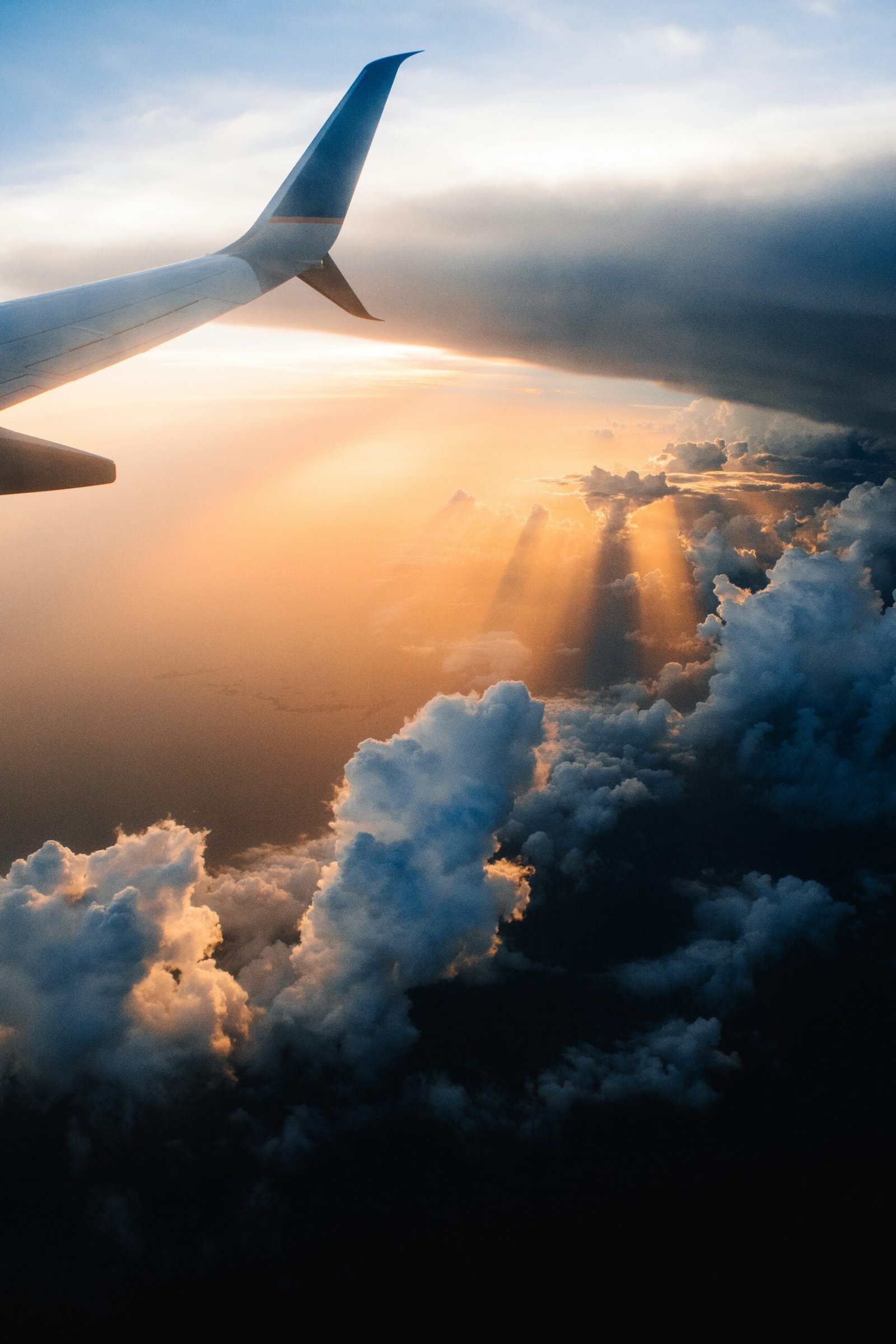
Indian Culture Rajasthan Travel Guide Taj Mahal Tourism Tourist Destinations Travel Guide

- हिन्दी संस्करण

Taj Mahal was built by a grief stricken Emperor Shah Jahan as a memorial to his beloved wife Mumtaz Mahal.
A world-renowned wonder, Taj Mahal sits pretty on the northern side of this green paradise.
It looks the same from all the four sides. The Quranic inscriptions on its four entrances are carved in such subtle increase in size that may appear to be of the same size from top to bottom.
Shahjahan invited master craftsmen from as far as Italy and Persia to help design his ambitious tribute to love.
The Taj Mahal is phenomenal not in its beauty alone that shines forth, but in the deep planning and design that went into its making, and the ethereal idea of immortalizing love. Delicate carvings in marble vie with gorgeous pietra dura for attention.
Lapis-lazuli, Cornelian, Mother of pearl, Agate and Emerald are inlaid in floral and geometrical patterns in the marble itself.
Work on this enchanting mausoleum on the bank of Yamuna started in 1631 and it took around 22 years to complete the entire premises with the help of an estimated 20,000 workers.

Take advantage of the search to browse through the World Heritage Centre information.
Share on social media
Unesco social media, factors affecting the property in 2004 *.
- Commercial development
- Financial resources
- Management systems/ management plan
- Water (rain/water table)
Factors * affecting the property identified in previous reports
International assistance: requests for the property until 2004, missions to the property until 2004 **, conservation issues presented to the world heritage committee in 2004.
The World Heritage Committee , at its 27th session in July 2003, requested the World Heritage Centre and ICOMOS to undertake a Joint Reactive Monitoring Mission to hold consultations with the State Party concerning the state of conservation of these World Heritage properties. At the invitation of the Government of India, the mission was carried out from 10 to 15 January 2004 to the World Heritage properties of Taj Mahal, Agra Fort and Fatehpur Sikri. The mission examined the proposed “Taj Corridor Project” with the Indian authorities and assessed the potential negative impact of this project on the World Heritage property and also identified urgent conservation and management needs.
(a) The “Taj Corridor Project”
This reactive monitoring mission was undertaken to evaluate the “Taj Corridor Project”. However, not much can be said about the project, since the mission members never received any project plans or details. Most of the information is either verbal or from the media. It is obvious that this project was very ambitious and if carried out would have caused serious damage to the World Heritage properties of Taj Mahal and Agra Fort:
Evidently the project is not continuing; a very courageous decision by the relevant Indian authorities to stop a project on which millions of US$ have already been spent. Located between the Taj Mahal and Agra Fort, the project would have certainly had a negative visual and cultural impact on the heritage values of these properties as they were built facing the river, which plays a very important role in the design of these sites.
What remains on site is a dry wall of local red sandstone (about ten meters wide), built into the bed of the Yamuna river. The purpose of the wall was to create a promenade which could be a place for commercial and tourism activities. There is also a sloping revetment of the river bank, made of the same red sandstone. The mission suggested that a development plan for the whole area and town should be prepared. Such a plan would prevent similar experiences such as the “Taj Corridor Project” from occurring again. It is also important to indicate that the river, although very attractive from a distance, is extremely polluted. Cleaning the river and preventing its use as a sewage canal should become a priority, at least in this important section between the two World Heritage properties.
(b) The state of conservation of Agra Fort
The mission visited parts of the Fort and observed some very impressive gardening work being carried out following excavations and research.
The condition of the large part of the Fort still used by the army is unknown. Judging from the part which was in military use until recently however, there is cause for concern. Conservation works are being conducted in this wing. Otherwise, it seems that many of the conservation issues are basically due to deterioration over time and visitor pressure. Neither of these seem critical and the property appears well-managed. It should still be recommended that, while considerable effort is going into the gardens’ development, more should go to regular maintenance and conservation (mainly plasterwork).
(c) Plans and state of conservation of the Taj Mahal
Not surprisingly, such an important and much-visited site is continually being conserved and maintained. The work being conducted is very impressive and the use of traditional workmanship is of high quality. New plans for improved visitor management have been presented, the main idea being to attract visitors to areas other than solely the main axis. The aim is to avoid the overuse of this axis, to show other parts of the monumental complex, to keep visitors on site longer and to provide better services and information using two identical visitor centres in two of the side courtyards. This will require incorporating two doors into an original wall, which does not compromise in any way the cultural and visual aspects of the property.
The contrast between the extraordinarily beautiful inner area of the compound and the immediate vicinity is striking. This is not simply a matter of funding but of planning and management. The mission recommended that the Indian authorities should clean and enhance the whole area surrounding the monument, within a defined distance, as such an important monument deserves.
(d) Fatehpur Sikri
The stone used to build this wonderful site suffers from a certain amount of natural decay, mainly erosion. This phenomenon is much more pronounced where water makes contact with the stone and evaporates through it. The evidence of erosion is particularly severe on some of the stone ceilings. It is recommended to specially monitor this and wherever possible provide improved insulation and water proofing for roofs and better drainage. Plans for the new entrance and commercial complex were presented. The location seems appropriate and will permit the relocation of commercial activities from the immediate vicinity of the site (mainly the mosque compound). It is recommended to clarify the signage on the site. The most visited area is clearly signposted and described in guides and plans, but it would be useful to provide more information on the site as a whole.
Summary of the interventions
Decisions adopted by the committee in 2004.
- Draft Decision
28 COM 15B.58
Taj mahal, agra fort and fatehpur sikri.
The World Heritage Committee,
- Takes note of the UNESCO-ICOMOS reactive monitoring mission findings and recommendations concerning the World Heritage properties of Taj Mahal, Agra Fort and Fatehpur Sikri;
- Congratulates the Indian authorities for having suspended the “Taj Corridor Project”;
- Underscores the importance of reinforcing the management and regional development planning mechanism relating to the protection of World Heritage properties in the Agra District;
- set up a body to coordinate and address all the conservation and development challenges of the three World Heritage properties in the Agra District by involving all the stakeholders,
- evaluate and possibly redefine the World Heritage protective boundaries and management guidelines pertaining to the Taj Mahal and Agra Fort. Note should be taken of recent research which indicates that the original design of the Taj monument included the Mehtab Bagh and other relocated cultural properties across the Yamuna River. These constitute an essential part of the whole area and therefore require integrated protection,
- integrate the Taj Mahal and Agra Fort as one protected World Heritage area to ensure better management of the property, with a possible inclusion of Fatehpur Sikri subject to a broader regional planning scheme
- elaborate a comprehensive site management plan, including a specific visitor management plan, based on a regional plan for conservation and development of the World Heritage properties, and ensure its implementation,
- improve the on-site interpretation and visitor management at the World Heritage properties,
- set up on-site monitoring mechanisms, by using traditional and new technological means, to assess the impact of urban development on the World Heritage values of the properties and their surrounding areas so as to integrate the protection of urban landscape into the overall heritage protection mechanism;
- Further requests the State Party, as a first step, to organize a National Workshop on the Elaboration of Site Management Plans for the preparation of the World Heritage extension(s), including the upgrading of the protective boundary and buffer zones;
- Requests the World Heritage Centre, the Advisory Bodies and other international partners to support and strengthen co-operation activities with the competent national and local authorities by providing appropriate assistance;
- Also requests the State Party to submit to the World Heritage Centre, by 1 February 2005, a report on the progress achieved in the implementation of the above-mentioned recommendations, for examination by the Committee at its 29th session in 2005
Draft Decision : 28 COM 15B . 58
The World Heritage Committee,
1. Takes note of the UNESCO-ICOMOS reactive monitoring mission findings and recommendations concerning the World Heritage properties of Taj Mahal, Agra Fort and Fatehpur Sikri ;
2. Congratulates the Indian authorities for having suspended the “Taj Corridor Project”;
3. Underscores the importance of reinforcing the management and regional development planning mechanism relating to the protection of World Heritage properties in the Agra District;
4. Requests the State Party to:
a) Establish a Steering Committee, to be headed by the Department of Culture, to co-ordinate and address all the conservation and development challenges of the three World Heritage properties in the Agra District by involving all the stakeholders;
b) Evaluate and possibly redefine the World Heritage protective boundaries and management guidelines pertaining to the Taj Mahal and Agra Fort. Note should be taken of recent research which indicates that the original design of the Taj monument included the Mehtab Bagh and other relocated cultural properties across the Yamuna River. These constitute an essential part of the whole area and therefore require integrated protection;
c) Integrate the Taj Mahal and Agra Fort as one protected World Heritage area to ensure better management of the property, with a possible inclusion of Fatehpur Sikri subject to a broader regional planning scheme;
d) Elaborate a comprehensive site management plan, including a specific visitor management plan, based on a regional plan for conservation and development of the World Heritage properties, and ensure its implementation;
e) Improve the on-site interpretation and visitor management at the World Heritage properties;
f) Set up on-site monitoring mechanisms, by using traditional and new technological means, to assess the impact of urban development on the World Heritage values of the properties and their surrounding areas so as to integrate the protection of urban landscape into the overall heritage protection mechanism;
5. Request s the State Party, as a first step, to organize a National Workshop on the Elaboration of Site Management Plans for the preparation of the World Heritage extension(s), including the upgrading of the protective boundary and buffer zones;
6. Requests the World Heritage Centre, the Advisory Bodies and other international partners to support and strengthen co-operation activities with the competent national and local authorities by providing appropriate assistance.

Documents examined by the Committee
* : The threats indicated are listed in alphabetical order; their order does not constitute a classification according to the importance of their impact on the property. Furthermore, they are presented irrespective of the type of threat faced by the property, i.e. with specific and proven imminent danger (“ascertained danger”) or with threats which could have deleterious effects on the property’s Outstanding Universal Value (“potential danger”).
** : All mission reports are not always available electronically.

Other historical monuments affected by recent rains
Read more articles on.
- Taj Mahal Leakage
- Archaeological Survey Of India
- Water Leakage
- Historical Monuments
- Climate Change
- Tourism Industry
- Heavy Rainfall
Popular Right Now
Advertisement
My Subscriptions

Taj Mahal's Iconic Dome Leaking, Garden Flooded After Heavy Rain Batters Agra; ASI Inspects Site
A video of the taj mahal premises also went viral on social media, showing a submerged garden after incessant rainfall in agra in the past three days..

The unrelenting rainfall in Agra for the past three days has inundated most parts of the city, including the iconic Taj Mahal. The UNESCO World Heritage site was also hit by the rains as its main dome witnessed water leakage. A video of the Taj Mahal premises went viral on social media, showing a submerged garden at the site after rains battered the city.
However, the Archaeological Survey of India (ASI) has assured that the main dome was intact and the leakage was due to seepage and not due to any damage. The dome was examined by the ASI using a drone camera.
Rajkumar Patel, Superintending Chief of the Archaeological Survey of India (ASI), Agra circle, told news agency PTI: "Yes, we have witnessed the leakage in the main dome of the Taj Mahal. After that when we checked it was due to seepage and there was no damage to the main dome. We have checked the main dome through a drone camera." He also said that it is being inspected whether the leakage is intermittent or continuous.
He added: "Moisture was seen inside the main mausoleum. There may be a hairline crack on the dome's stones, causing leakage. The place where water drops are falling is being checked, to find out whether it is continuously in the same position or is falling intermittently. In any case, necessary repairs will be carried out. The garden will be rejuvenated once the rain stops," TOI reported
Meanwhile, a purported video went viral on the internet wherein one of the gardens of the Taj Mahal can be seen inundated after rains. This sparked concern among tourists and locals. Several tourists reportedly visited the Taj Mahal and posted videos of it.
🇮🇳 Taj Mahal Gardens Submerged After Incessant Rain Hits India's Agra Work is ongoing to drain the water from one of the Seven Wonders of the World. pic.twitter.com/C5shcu4HZh — RT_India (@RT_India_news) September 12, 2024
A local working as a government-approved tour guide, said: "Taj Mahal is the pride of Agra and the entire nation which provides employment to hundreds of locals and those who are working in the tourism industry."
Another government-approved tour guide Monika Sharma said: "Proper care should be taken of the monument because for the tourism industry people it is the only hope".
Several other historical sites were impacted by the prevailing weather conditions in the city. Another UNESCO World Heritage site, the Agra Fort, witnessed water seepage and flooding. Fatehpur Sikhri, a historic city built by Akbar, Jhunjhun Ka Katora, Rambagh, Akbar's Tomb in Sikandra, Mehtab Bagh, Chini Ka Rauza, were also damaged in the rain.
Agra witnessed 151 mm of rain on Thursday, which was the highest in 24 hours in the past 80 years. Most parts of the city remained waterlogged due to incessant rain for the past three days. While one of the National Highways was flooded with rain water, crops were submerged in some parts due to the rain. Even the posh localities of Agra witnessed waterlogging due to the continuous rain. In view of the rain, the Agra administration has ordered all schools to remain closed as a precautionary measure.

Top Headlines
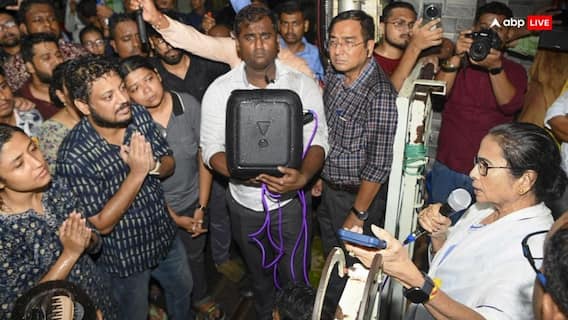
Trending News

Photo Gallery

Trending Opinion

Personal Corner

- ₹ 10 Lakh,1" data-value="Loan ₹ 10 Lakh">Loan ₹ 10 Lakh
- Games & Puzzles

- Entertainment
- Latest News
- Donald Trump News Live
- Web Stories
- Mumbai News
- Bengaluru News
- Daily Digest

Taj Mahal's main dome sees water leakage after incessant rain in Agra | Video goes viral
A senior official from the asi, agra circle, confirmed there is a leakage in the main dome of the taj mahal due to seepage but assured there is no damage..
The main dome of the Taj Mahal in Uttar Pradesh's Agra witnessed water leakage due to incessant rain for the past three days which inundated a garden on the premises, news agency PTI reported. A purported video of the submerged garden on the Taj Mahal premises went viral on Thursday and caught the tourists' attention.

A senior official from the Archaeological Survey of India (ASI), Agra circle, confirmed there is a leakage in the main dome of the Taj Mahal due to seepage but assured there is no damage.
Rajkumar Patel, superintending chief of the ASI, Agra circle, told news agency PTI, “Yes, we observed leakage in the main dome of the Taj Mahal. Upon inspection, it was found to be caused by seepage, and no damage has occurred. We verified the condition of the dome using a drone camera.”
On Thursday evening, a 20-second video went viral showing one of the monument's gardens submerged in rainwater. This caught the attention of visiting tourists, many of whom filmed the scene.
Watch the video here:
A local government-approved tour guide highlighted the importance of the Taj Mahal, stating it is a symbol of pride for Agra and the entire nation, providing employment to hundreds in the tourism industry. Monika Sharma, another government-approved guide, added, "Proper care must be taken of the monument, as it is the only hope for those in the tourism sector."
Agra has been experiencing heavy rainfall for the past three days, leading to waterlogging across the city. One of the national highways was flooded, crops were submerged, and even upscale neighborhoods faced water choking.
About Taj Mahal
The Taj Mahal, a UNESCO World Heritage Site, was built between 1632 and 1653 by Mughal Emperor Shah Jahan in Agra, as a mausoleum for his beloved wife, Mumtaz Mahal, who died during childbirth.
This iconic white marble structure is renowned for its stunning architecture, blending Persian, Islamic, and Indian styles. The complex includes a grand dome, minarets, gardens, and a reflecting pool.
Symbolising eternal love, the Taj Mahal is considered one of the most beautiful buildings in the world and remains a masterpiece of Mughal architecture, attracting millions of visitors each year.
- Tourism Industry
- Archaeological Survey Of India
- Water Leakage
- Terms of use
- Privacy policy
- Weather Today
- HT Newsletters
- Subscription
- Print Ad Rates
- Code of Ethics
- India vs Sri Lanka
- Live Cricket Score
- Cricket Teams
- Cricket Players
- ICC Rankings
- Cricket Schedule
- Shreyas Iyer
- Harshit Rana
- Kusal Mendis
- Ravi Bishnoi
- Rinku Singh
- Riyan Parag
- Washington Sundar
- Avishka Fernando
- Charith Asalanka
- Dasun Shanaka
- Khaleel Ahmed
- Pathum Nissanka
- Other Cities
- Income Tax Calculator
- Petrol Prices
- UGC NET Answer Key 2024 Live
- Diesel Prices
- Silver Rate
- Relationships
- Art and Culture
- Taylor Swift: A Primer
- Telugu Cinema
- Tamil Cinema
- Board Exams
- Exam Results
- Admission News
- Employment News
- Competitive Exams
- BBA Colleges
- Engineering Colleges
- Medical Colleges
- BCA Colleges
- Medical Exams
- Engineering Exams
- Love Horoscope
- Annual Horoscope
- Festival Calendar
- Compatibility Calculator
- Career Horoscope
- Manifestation
- The Economist Articles
- Lok Sabha States
- Lok Sabha Parties
- Lok Sabha Candidates
- Explainer Video
- On The Record
- Vikram Chandra Daily Wrap
- Entertainment Photos
- Lifestyle Photos
- News Photos
- Olympics 2024
- Olympics Medal Tally
- Other Sports
- EPL 2023-24
- ISL 2023-24
- Asian Games 2023
- Public Health
- Economic Policy
- International Affairs
- Climate Change
- Gender Equality
- future tech
- HT Friday Finance
- Explore Hindustan Times
- Privacy Policy
- Terms of Use
- Subscription - Terms of Use
மொழியைத் தேர்வு செய்யவும்
தமிழில் உள்ள நுணுக்கங்கள்
Taj Mahal : உலக அதிசயங்களில் ஒன்றான தாஜ் மஹாலின் பிரதான குவிமாடத்தில் தண்ணீர் கசிவு .. வீடியோ வைரல்!
Taj Mahal : ஆக்ரா வட்டத்தைச் சேர்ந்த ASI,மூத்த அதிகாரி ஒருவர், தாஜ்மஹாலின் பிரதான குவிமாடத்தில் கன மழை காரணமாக நீர் கசிவு இருப்பதை உறுதிப்படுத்தினார், ஆனால் எந்த சேதமும் இல்லை என்று உறுதியளித்தார்.

Taj Mahal : தாஜ்மஹால் இந்தியாவின் பாரம்பரிய சின்னங்களில் ஒன்றாகவும், உலக அதிசயங்களில் ஒன்றாகவும் பார்க்கப்படுகிறது. உத்தரபிரதேச மாநிலம் ஆக்ராவில் அமைந்துள்ள தாஜ்மஹாலின் பிரதான குவிமாடத்தில் கடந்த மூன்று நாட்களாக பெய்து வரும் தொடர் மழை காரணமாக நீர் கசிவு ஏற்பட்டு வளாகத்தில் உள்ள தோட்டத்தில் மூழ்கியதாக செய்தி நிறுவனம் PTI தெரிவித்துள்ளது. தாஜ்மஹால் வளாகத்தில் உள்ள தோட்டம் நீரில் மூழ்கியதாக கூறப்படும் வீடியோ ஒன்று வியாழக்கிழமை வைரலாக பரவி சுற்றுலா பயணிகளின் கவனத்தை ஈர்த்தது. இந்திய தொல்லியல் துறையின் (ASI), ஆக்ரா வட்டத்தைச் சேர்ந்த மூத்த அதிகாரி ஒருவர், தாஜ்மஹாலின் பிரதான குவிமாடத்தில் கசிவு காரணமாக கசிவு ஏற்பட்டு இருப்பதை உறுதிப்படுத்தினார், அதே சமயம் தற்போது ஏற்பட்டுள்ள நீர்கசிவால் கட்டடத்தில் எந்த சேதமும் இல்லை என்று உறுதியளித்தார்.
ஏஎஸ்ஐ, ஆக்ரா வட்டத்தின் கண்காணிப்புத் தலைவர் ராஜ்குமார் படேல், செய்தி நிறுவனமான பிடிஐயிடம், “ஆம், தாஜ்மஹாலின் பிரதான குவிமாடத்தில் கசிவு இருப்பதை நாங்கள் கவனித்தோம். ஆய்வு செய்ததில், கசிவு ஏற்பட்டு, சேதம் ஏதும் ஏற்படவில்லை என தெரியவந்தது. ட்ரோன் கேமராவைப் பயன்படுத்தி குவிமாடத்தின் நிலையை நாங்கள் சரிபார்த்தோம்.
வியாழன் மாலை, நினைவுச்சின்னத்தின் தோட்டங்களில் ஒன்று மழைநீரில் மூழ்கியதைக் காட்டும் 20 வினாடி வீடியோ வைரலானது. இது சுற்றுலா பயணிகளின் கவனத்தை ஈர்த்தது, அவர்களில் பலர் இந்த காட்சியை படம் பிடித்தனர்.
வீடியோவை இங்கே பாருங்கள்:
🚨🇮🇳 | The symbol of love, Taj Mahal, is flooded. The garden situated in the premises of this beautiful building is submerged. It has been raining continuously for the last 24 hours in Agra. Efforts are on to drain out the water. 📌 #Agra | #UttarPradesh | #india #tajmahal … https://t.co/V3YoVyg79y pic.twitter.com/iMTMWxdPv6 — Weather monitor (@Weathermonitors) September 12, 2024
உள்ளூர் அரசாங்கத்தால் அங்கீகரிக்கப்பட்ட சுற்றுலா வழிகாட்டி, தாஜ்மஹாலின் முக்கியத்துவத்தை எடுத்துரைத்தார், இது ஆக்ராவிற்கும் முழு நாட்டிற்கும் பெருமைக்குரிய சின்னமாக உள்ளது, இது சுற்றுலாத் துறையில் நூற்றுக்கணக்கானவர்களுக்கு வேலைவாய்ப்பை வழங்குகிறது. அரசாங்கத்தால் அங்கீகரிக்கப்பட்ட மற்றொரு வழிகாட்டியான மோனிகா ஷர்மா, "சுற்றுலாத் துறையில் உள்ளவர்களுக்கு ஒரே நம்பிக்கையாக இருப்பதால், நினைவுச்சின்னத்தை சரியான முறையில் கவனிக்க வேண்டும்" என்று கூறினார்.
ஆக்ராவில் கடந்த மூன்று நாட்களாக கனமழை பெய்து வருவதால், நகரம் முழுவதும் தண்ணீர் தேங்கியுள்ளது. தேசிய நெடுஞ்சாலைகளில் ஒன்று வெள்ளத்தில் மூழ்கியது, பயிர்கள் நீரில் மூழ்கின, மேல்தட்டு சுற்றுப்புறங்கள் கூட தண்ணீர் மூச்சுத் திணறலை எதிர்கொண்டன.
தாஜ்மஹால் குறித்த சுவாரஸ்ய தகவல்கள்
யுனெஸ்கோவின் உலக பாரம்பரிய தளமான தாஜ்மஹால் 1632 மற்றும் 1653 க்கு இடையில் முகலாய பேரரசர் ஷாஜஹானால் ஆக்ராவில் கட்டப்பட்டது, பிரசவத்தின் போது உயிரிழந்த அவரது அன்பு மனைவி மும்தாஜ் மஹாலின் நினைவாக கட்டப்பட்ட கல்லறை.
இந்த நினைவு சின்னம் வெள்ளை பளிங்கு கற்கலாம் கட்டப்பட்டது. இதன் அமைப்பு அதன் அற்புதமான கட்டிடக்கலை, பாரசீக, இஸ்லாமிய மற்றும் இந்திய பாணிகளை கலப்பதற்காக புகழ்பெற்றது. இந்த வளாகத்தில் ஒரு பெரிய குவிமாடம், மினாரெட்கள், தோட்டங்கள் மற்றும் தாஜ்மஹாலை அப்படியே பிரதிபலிக்கும் குளம் ஆகியவை அடங்கும்.
நித்திய அன்பின் அடையாளமாக, தாஜ்மஹால் உலகின் மிக அழகான கட்டிடங்களில் ஒன்றாக கருதப்படுகிறது மற்றும் முகலாய கட்டிடக்கலையின் தலைசிறந்த படைப்பாகவும் விளங்குகிறது. உலகம் முழுவதும் இருந்து இந்தியா வரும் சுற்றுலா பயணிகள் தாஜ்மஹாலை நேரில் காண்பதில் ஆர்வம் காட்டுகின்றனர். ஒவ்வொரு ஆண்டும் மில்லியன் கணக்கான பார்வையாளர்களை ஈர்க்கிறது.
- Logout Login
- Adventure Holidays
- Weekend Getaways
- Driving Holidays
- Travel News
Top Searches
Luxurious Holiday Destinations
National Parks Europe
Offbeat Gateways India
Fossil Lake Safari
UNESCO World Heritage Sites
World Earthquake Prone Countri
Bhutan open to unlimited tourists, confirms Tourism Chief
Times of India TIMESOFINDIA.COM / TRAVEL NEWS , BHUTAN / Created : Sep 16, 2024, 13:30 IST
You're Reading
Bhutan will not limit the number of visitors, ensuring high-value tourism. The country aims to attract quality tourists while preserving its environment and culture. Visitors must pay a sustainable development fee, contributing to … Read more
Bhutan will not limit the number of visitors, ensuring high-value tourism. The country aims to attract quality tourists while preserving its environment and culture. Visitors must pay a sustainable development fee, contributing to Bhutan's sustainability goals. Indian travellers are the majority, followed by the US and UK. Read less
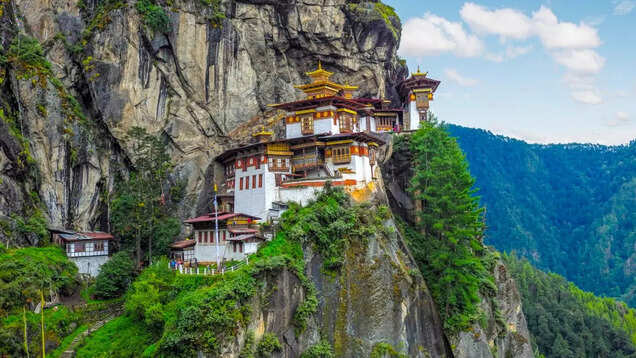
10 visa-free islands for Indians
More from travel news.

Comments (0)

Refrain from posting comments that are obscene, defamatory or inflammatory, and do not indulge in personal attacks, name calling or inciting hatred against any community. Help us delete comments that do not follow these guidelines by marking them offensive . Let's work together to keep the conversation civil.
Comments ( ) Sort: Newest UpVoted Oldest Discussed Down Voted closecomments

SIGN IN WITH
Or post without registration.

Visual Stories
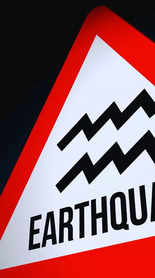
Popular Galleries

8 most luxurious holiday destination in the world TRAVEL TRENDS , WORLD

Picture-postcards from Switzerland's most charming villages

5 most beautiful Middle East countries to explore this October TRAVEL TRENDS , WORLD
Trending stories.
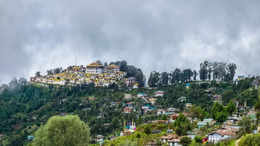
5 offbeat getaways in India for a peaceful long weekend escape

8 most luxurious holiday destination in the world

Most beautiful national parks in Europe: A must-visit guide

UNESCO World Heritage Sites with high entry fees

- Offbeat travel: Going on a Fossil Lake safari in Wyoming, US
- 1 Bhutan open to unlimited tourists, confirms Tourism Chief
- 2 Greece increases Golden Visa investment threshold
- 3 Uttarakhand on high alert: Landslides at prime routes leading to Badrinath
- 4 Agra: Heavy rain leads to water leakage from Taj Mahal's main dome; ASI on high alert
- 5 Mumbai: London’s pod taxis set to operate in Bandra-Kurla Complex soon

THE DEFINITIVE GUIDE TO DESTINATIONS, ITINERARIES, THINGS TO DO, RESTAURANTS, NIGHTLIFE and LOTS MORE!
FOLLOW US ON
Places to visit.
- Places to visit in Bangalore
- Places to visit in Mumbai
- Places to visit in Delhi
- Places to visit in Goa
- Hotels in Goa
- Hotels in Jaipur
- Hotels in Shimla
- Hotels in Mumbai
Things To do
- Things to do in Goa
- Things to do in Mumbai
- Things to do in Bangalore
- Things to do in Delhi
Travel Inspiration
- Visa on arrival for Indians
- Honeymoon Places in india
- Hill Stations in India
- Weekend getaways in Mumbai
- Weather in Delhi
- Weather in Chennai
- Weather in Bangalore
- Weather in Mumbai
Best Beaches
- Goa Beaches
- Mumbai Beaches
- Pondicherry Beaches
- Kerala Beaches
- Restaurants in Bangalore
- Restaurants in Chennai
- Restaurants in Pune
- Restaurants in Jaipur
- Hill Station near Delhi
- Winter trip to Ladakh
- Places to visit in Kerala
- Winter Honeymoon Destinations
- UK visa guide for Indians
- Winter Trip to Manali
- Vaishno Devi Yatra
- Special Train Ticket Booking
- HP inter-state Bus
- Honeymoon Destinations India
Latest News
- Khonoma, Nagaland: The success story of eco-tourism, sustainable travel and living in India
- Greece increases Golden Visa investment threshold
- Why is Bali one of the top choices for vacation for women?
- From secret tunnels to train streets: Unusual tourist attractions in Vietnam
Congratulations!
You have been successfully added to the mailing list of Times of India Travel. To complete the subscription process, kindly open your inbox and click on the confirmation link which has been emailed to you.
Share with friends
Thank You for sharing! Your friend will receive the article link on email mentioned.
- (For more than one recipient, type addresses separated by commas)
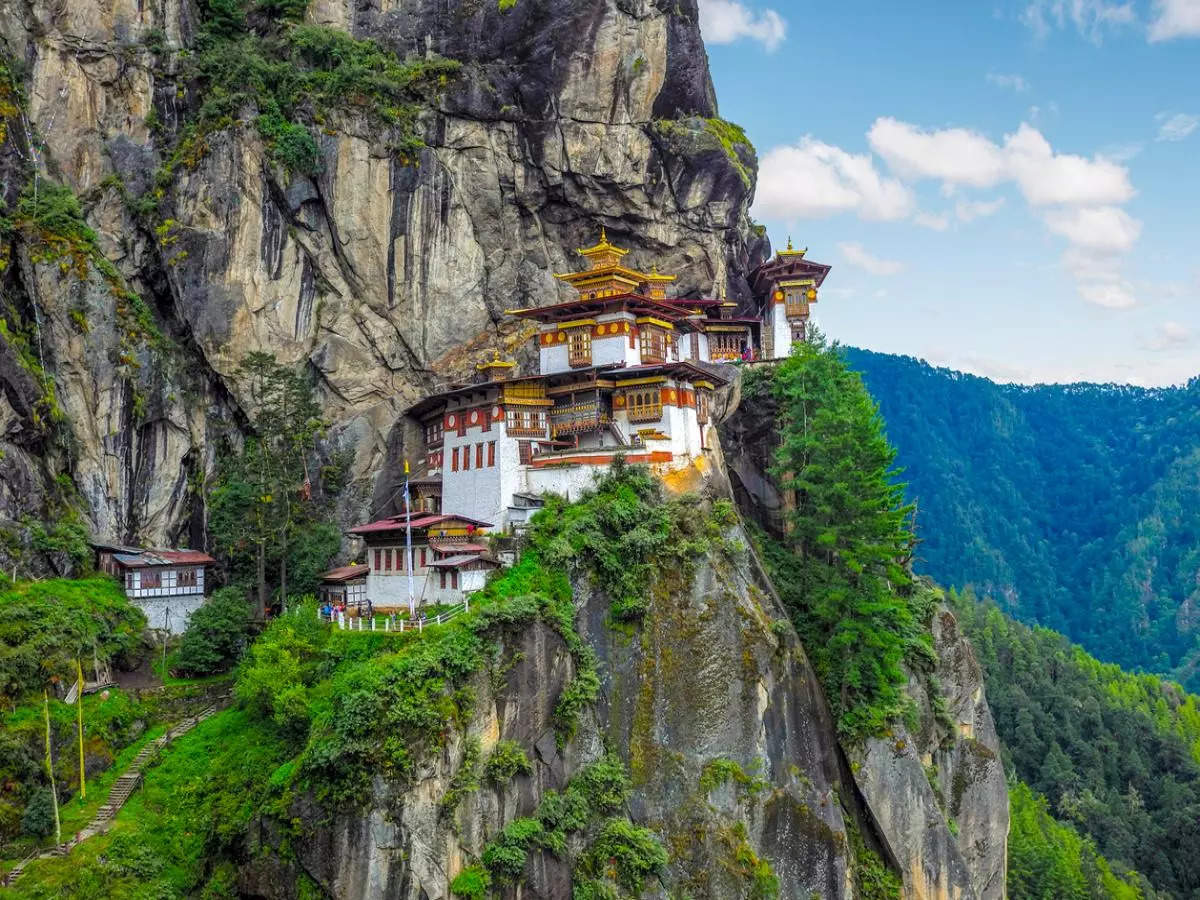
Bhutan will not limit the number of visitors, ensuring high-value tourism. The country aims to attract quality tourists while preserving its environment and culture. Visitors must pay a sustainable de...


- Heritage Walks
Know the Agra
Discover taj, official contacts.
+91 0562 2226431 10:00 AM to 5:00PM
+91 562 2421204 06:30 AM to 09:30PM
UP Police Helpline

COMMENTS
Night viewing of Taj Mahal is available on five days in a month i.e. on full moon night and two nights before and two after the full moon. Timing: 20:00 hrs. to 23:59 hrs. in 8 batches of max. 50 people each. Time duration for each batch is half an hour (30 minutes). View details.
Taj Mahal is a white marble mausoleum built by Shah Jahan in memory of his wife Mumtaz Mahal between 1631 and 1648 AD. It is one of the seven wonders of the world and a UNESCO World Heritage Site in Agra, Uttar Pradesh.
Learn about the history and beauty of the Taj Mahal, a UNESCO World Heritage Site and one of the most iconic buildings in the world. Discover how it was built as a tribute to a beloved wife by a ...
The Taj Mahal is a white marble mausoleum built by the Mughal emperor Shah Jahan in memory of his wife in Agra, Uttar Pradesh. It is one of the three UNESCO World Heritage Sites in Agra, along with the Agra Fort and Fatehpur Sikri.
The Taj Mahal is a white marble mausoleum built by the Mughal emperor Shah Jahan in memory of his wife Mumtaz Mahal in Agra, India. It is a UNESCO World Heritage Site and one of the New 7 Wonders of the World, reflecting the fusion of Indo-Islamic and Mughal styles of art and culture.
Visit the Taj Mahal, the epitome of architectural splendour and a UNESCO World Heritage Site. Find out how to book tickets, timings, entry fees and more on the official website of Uttar Pradesh Tourism.
Learn about the Taj Mahal, the iconic monument built by a mourning emperor for his beloved wife in Agra, India. Discover its architecture, ornamentation, gardens, and how to plan your trip to this UNESCO World Heritage Site.
The Taj Mahal is considered the finest example of Mughal architecture, a style that combines elements from Persian, Indian, and Islamic architectural styles. In 1983, the Taj Mahal became a UNESCO World Heritage Site and was cited as "the jewel of Muslim art in India and one of the universally admired masterpieces of the world's heritage." The Taj!
Taj Mahal is a marble monument built by Mughal emperor Shah Jahan for his wife Mumtaz Mahal, meaning the crown of the palace. It is one of the seven wonders of the world and a UNESCO World Heritage Site, with intricate inscriptions, carvings and gems.
Learn how to visit the Taj Mahal in Agra, India, one of the Seven Wonders of the World and a tomb of eternal love. Find out the best time, how to get there, entry fees, opening hours, and night viewing options.
Learn how to get to Agra, the best time to visit, entrance fees, and more tips for seeing the Taj Mahal, one of the Seven Wonders of the World. Find out how to book a guided tour, what to wear, and what else to do in Agra.
Learn about the history, architecture, and symbolism of the Taj Mahal, a UNESCO World Heritage site and one of the new seven wonders of the world. Discover how to visit the Taj Mahal with children ...
The Taj Mahal, a UNESCO World Heritage site, attracts millions of visitors each year, necessitating a structured ticketing system to manage the influx. Entry fees for the Taj Mahal vary depending on the visitor's nationality. For Indian citizens, the entry fee is significantly lower compared to international tourists.
The Taj Mahal is a white marble mausoleum built by the Mughal emperor Shah Jahān for his wife Mumtaz Mahal in Agra, India. It is a UNESCO World Heritage site and one of the new Seven Wonders of the World, with a height of 240 feet (73 metres) at the tip of its dome.
Learn about the history and architecture of Taj Mahal, a world-renowned wonder built by Emperor Shah Jahan as a memorial to his wife Mumtaz Mahal. Visit the official website of Taj Mahal for more information and bookings.
Draft Decision: 28 COM 15B. 58. The World Heritage Committee, 1. Takes note of the UNESCO-ICOMOS reactive monitoring mission findings and recommendations concerning the World Heritage properties of Taj Mahal, Agra Fort and Fatehpur Sikri;. 2. Congratulates the Indian authorities for having suspended the "Taj Corridor Project";. 3. Underscores the importance of reinforcing the management ...
The Taj Mahal, one of the world's most iconic monuments, recently faced an unusual challenge as incessant rainfall in Agra over three days led to water leakage from its main dome. A video ...
Indian Tourism Office. 191, Mall Road, Agra - 282001. Tel : (+91) 562 - 2226378. Guides may help you in exploring Agra & around in a better way . Guides will also tell you about excursions, attraction, things to see , activities to enjoy , best itineraries as per your timings & much more. But please ensure that you are hiring a government ...
Following the reports of water leakage, a probe began, however, no damage has been found on the main dome even as the garden adjacent to the Taj Mahal remains submerged. Taj Mahal, located in Uttar Pradesh's Agra, is about 250 km from the national capital Delhi. It is a 17th-century mausoleum, a UNESCO World Heritage Site, and one of the seven ...
The unrelenting rainfall in Agra for the past three days has inundated most parts of the city, including the iconic Taj Mahal. The UNESCO World Heritage site, also one of the seven wonders of the world, was also hit by the rains as its main dome witnessed water leakage. ... "Proper care should be taken of the monument because for the tourism ...
Yet, the sight of a leaking Taj Mahal was enough to spark unease. Monika Sharma, a local government-approved tour guide, expressed her concern over the monument's maintenance. "Proper care should be taken of the monument because for the tourism industry people it is the only hope," Sharma said, echoing the sentiment of many in the community ...
The Taj Mahal, a UNESCO World Heritage Site, was built between 1632 and 1653 by Mughal Emperor Shah Jahan in Agra, as a mausoleum for his beloved wife, Mumtaz Mahal, who died during childbirth.
தமிழ் செய்திகள் / தேசம் மற்றும் உலகம் / Taj Mahal : உலக அதிசயங்களில் ...
The construction of the Taj Mahal was completed in 1643 but work continued on other phases of the project for another 10 years. The ivory-white marble mausoleum is a UNESCO World Heritage Site ...
Agra: Heavy rain leads to water leakage from Taj Mahal's main dome; ASI on high alert More News Read more: 8 international destinations Indians can enjoy on a budget
Learn about the history, facts and myths of the Taj Mahal, the most famous architectural wonder and the world's largest mausoleum. Discover how the emperor Shah Jahan built it as a tribute to his wife Mumtaz Mahal and how it reflects the concept of pure love and harmony.
All photos (2) Revenue impacts the experiences featured on this page, learn more. The area. Full view. Best nearby. Restaurants. 37 within 3 miles. Schastye Cafe. 87.
Dubna Tourism Dubna Hotels Dubna Bed and Breakfast Flights to Dubna Dubna Restaurants Things to Do in Dubna Dubna Travel Forum Dubna Photos Dubna Map. ... Maddalena Archipelago from Palau Hull Bay Farm & Beach Experience with Lunch 6-Day Muslim Halal Tour Including Delhi Agra Taj Mahal Srinagar Kashmir Tablao Flamenco Cordobes in La Rambla ...
Official Contacts. +91 0562 2226431 10:00 AM to 5:00PM. excluding declared hoiliday & sunday. +91 562 2421204 06:30 AM to 09:30PM. [email protected]. UP Police Helpline. 112. This is the official Website of Taj Mahal - Department of Tourism, Government of Uttar Pradesh, India. Visitor No:.
Dubna is a town in Russia, founded in 1956 as a center of nuclear research and development. It hosts the Joint Institute for Nuclear Research, a large international scientific institution, and is located on the Volga River, near Moscow.